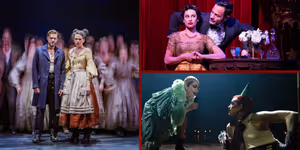- All of the Theater Stars in HBO's HARRY POTTER TV Series
- Exclusive: Oh My Pod U Guys- James Ortiz is the Puppet Master (Literally)
- 10 Inspiring Pieces of Theatre History I Saw Up Close And In Person This Summer—And How You Can Too!
Latest News
Trending Stories
Recommended for You
Video: HAMILTON Celebrates 10 Years on Broadway With Mega-Mix Curtain Call
Hamilton, which debuted on Disney+ in 2020, will be making its way to movie theaters this year in celebration of the 10th anniversary of the hit musical.
Broadway Grosses: Week Ending 8/3/25 - Long Running Shows WICKED and HAMILTON Top the List
View the latest Broadway Grosses
Ariana DeBose to Star in THE BAKER'S WIFE at CSC
The Baker’s Wife will run from October 23 – December 14, 2025 at CSC’s Lynn F. Angelson Theater.
How You Can Help the Immigration Service Charities Supported by HAMILTEN
14 charities make up the We Get the Job Done Coalition.
Ticket Central
Hot Photos this week
 Cynthia Erivo and More in JESUS CHRIST SUPERSTAR
The cast also featured Phillipa Soo as Mary Magdalene and John Stamos as King Herod; Milo Manheim as Peter; and Raúl Esparza as Pontius Pilate.
Cynthia Erivo and More in JESUS CHRIST SUPERSTAR
The cast also featured Phillipa Soo as Mary Magdalene and John Stamos as King Herod; Milo Manheim as Peter; and Raúl Esparza as Pontius Pilate.
 Photo: MY NEIGHBOUR TOTORO Releases New Artwork
The new artwork captures the iconic bus stop scene where Mei and Satuski encounter the forest spirit Totoro for the first time together.
Photo: MY NEIGHBOUR TOTORO Releases New Artwork
The new artwork captures the iconic bus stop scene where Mei and Satuski encounter the forest spirit Totoro for the first time together.
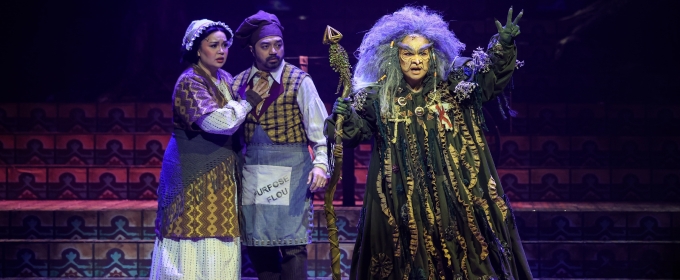 Lea Salonga, Arielle Jacobs, and More in Theatre Group Asia's INTO THE WOODS
The show pays tribute to the late Bobby Garcia, Theatre Group Asia's co-founder.
Lea Salonga, Arielle Jacobs, and More in Theatre Group Asia's INTO THE WOODS
The show pays tribute to the late Bobby Garcia, Theatre Group Asia's co-founder.
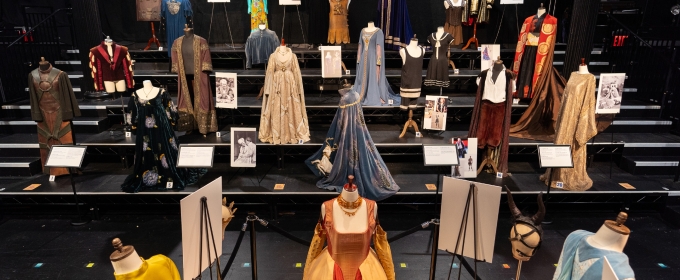 See Costumes Worn by Meryl Streep, Al Pacino & More in the Public's Costume Exhibit
The exhibit will be open Tuesday-Sunday: 11am-2pm and 5-8pm.
See Costumes Worn by Meryl Streep, Al Pacino & More in the Public's Costume Exhibit
The exhibit will be open Tuesday-Sunday: 11am-2pm and 5-8pm.
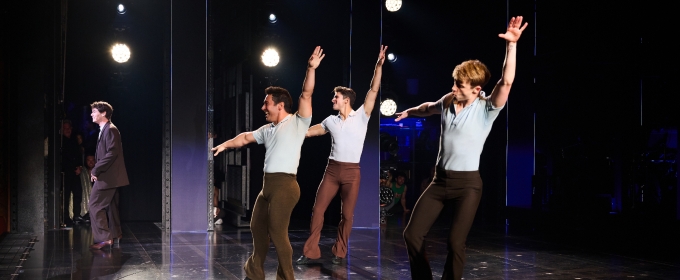 Inside A CHORUS LINE's 50th Anniversary Celebration
The event featured original stars Baayork Lee, Kelly Bishop, Wayne Cilento,
Inside A CHORUS LINE's 50th Anniversary Celebration
The event featured original stars Baayork Lee, Kelly Bishop, Wayne Cilento,
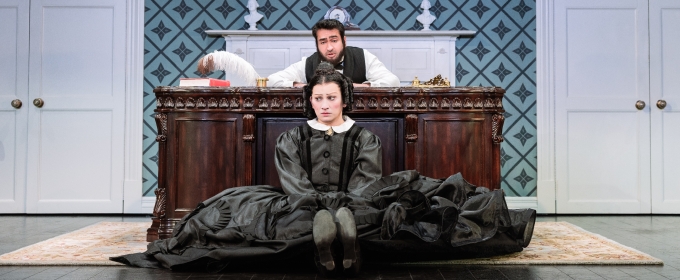 First Look at Jinkx Monsoon, Michael Urie & More in OH, MARY!
Monsoon will play 'Mary Todd Lincoln' through September 28 at the Lyceum Theatre.
First Look at Jinkx Monsoon, Michael Urie & More in OH, MARY!
Monsoon will play 'Mary Todd Lincoln' through September 28 at the Lyceum Theatre.
 Photo: MY NEIGHBOUR TOTORO Releases New Artwork
The new artwork captures the iconic bus stop scene where Mei and Satuski encounter the forest spirit Totoro for the first time together.
Photo: MY NEIGHBOUR TOTORO Releases New Artwork
The new artwork captures the iconic bus stop scene where Mei and Satuski encounter the forest spirit Totoro for the first time together.
 Lea Salonga, Arielle Jacobs, and More in Theatre Group Asia's INTO THE WOODS
The show pays tribute to the late Bobby Garcia, Theatre Group Asia's co-founder.
Lea Salonga, Arielle Jacobs, and More in Theatre Group Asia's INTO THE WOODS
The show pays tribute to the late Bobby Garcia, Theatre Group Asia's co-founder.
 See Costumes Worn by Meryl Streep, Al Pacino & More in the Public's Costume Exhibit
The exhibit will be open Tuesday-Sunday: 11am-2pm and 5-8pm.
See Costumes Worn by Meryl Streep, Al Pacino & More in the Public's Costume Exhibit
The exhibit will be open Tuesday-Sunday: 11am-2pm and 5-8pm.
 Inside A CHORUS LINE's 50th Anniversary Celebration
The event featured original stars Baayork Lee, Kelly Bishop, Wayne Cilento,
Inside A CHORUS LINE's 50th Anniversary Celebration
The event featured original stars Baayork Lee, Kelly Bishop, Wayne Cilento,
 First Look at Jinkx Monsoon, Michael Urie & More in OH, MARY!
Monsoon will play 'Mary Todd Lincoln' through September 28 at the Lyceum Theatre.
First Look at Jinkx Monsoon, Michael Urie & More in OH, MARY!
Monsoon will play 'Mary Todd Lincoln' through September 28 at the Lyceum Theatre.
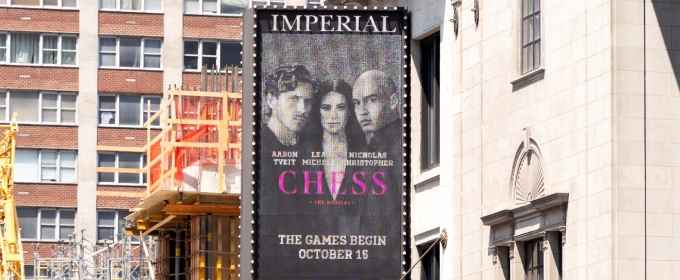 Up on the Marquee: CHESS Returns to Broadway
Chess will begin performances Wednesday, October 15, 2025, and officially open Sunday, November 16, 2025.
Up on the Marquee: CHESS Returns to Broadway
Chess will begin performances Wednesday, October 15, 2025, and officially open Sunday, November 16, 2025.
 Lea Salonga, Arielle Jacobs, and More in Theatre Group Asia's INTO THE WOODS
The show pays tribute to the late Bobby Garcia, Theatre Group Asia's co-founder.
Lea Salonga, Arielle Jacobs, and More in Theatre Group Asia's INTO THE WOODS
The show pays tribute to the late Bobby Garcia, Theatre Group Asia's co-founder.
 See Costumes Worn by Meryl Streep, Al Pacino & More in the Public's Costume Exhibit
The exhibit will be open Tuesday-Sunday: 11am-2pm and 5-8pm.
See Costumes Worn by Meryl Streep, Al Pacino & More in the Public's Costume Exhibit
The exhibit will be open Tuesday-Sunday: 11am-2pm and 5-8pm.
 Inside A CHORUS LINE's 50th Anniversary Celebration
The event featured original stars Baayork Lee, Kelly Bishop, Wayne Cilento,
Inside A CHORUS LINE's 50th Anniversary Celebration
The event featured original stars Baayork Lee, Kelly Bishop, Wayne Cilento,
 First Look at Jinkx Monsoon, Michael Urie & More in OH, MARY!
Monsoon will play 'Mary Todd Lincoln' through September 28 at the Lyceum Theatre.
First Look at Jinkx Monsoon, Michael Urie & More in OH, MARY!
Monsoon will play 'Mary Todd Lincoln' through September 28 at the Lyceum Theatre.
 Up on the Marquee: CHESS Returns to Broadway
Chess will begin performances Wednesday, October 15, 2025, and officially open Sunday, November 16, 2025.
Up on the Marquee: CHESS Returns to Broadway
Chess will begin performances Wednesday, October 15, 2025, and officially open Sunday, November 16, 2025.
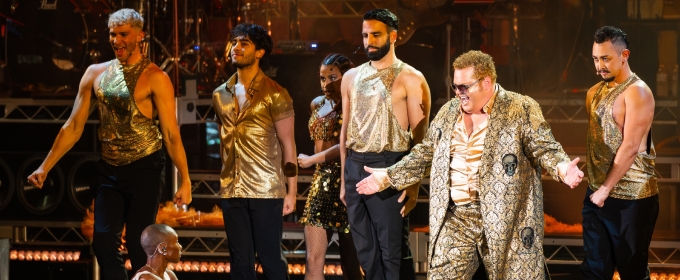 Josh Gad Rocks the Hollywood Bowl As JESUS CHRIST SUPERSTAR's 'King Herod'
Gad returned to the production after beating COVID to perform the iconic role.
Josh Gad Rocks the Hollywood Bowl As JESUS CHRIST SUPERSTAR's 'King Herod'
Gad returned to the production after beating COVID to perform the iconic role.
 See Costumes Worn by Meryl Streep, Al Pacino & More in the Public's Costume Exhibit
The exhibit will be open Tuesday-Sunday: 11am-2pm and 5-8pm.
See Costumes Worn by Meryl Streep, Al Pacino & More in the Public's Costume Exhibit
The exhibit will be open Tuesday-Sunday: 11am-2pm and 5-8pm.
 Inside A CHORUS LINE's 50th Anniversary Celebration
The event featured original stars Baayork Lee, Kelly Bishop, Wayne Cilento,
Inside A CHORUS LINE's 50th Anniversary Celebration
The event featured original stars Baayork Lee, Kelly Bishop, Wayne Cilento,
 First Look at Jinkx Monsoon, Michael Urie & More in OH, MARY!
Monsoon will play 'Mary Todd Lincoln' through September 28 at the Lyceum Theatre.
First Look at Jinkx Monsoon, Michael Urie & More in OH, MARY!
Monsoon will play 'Mary Todd Lincoln' through September 28 at the Lyceum Theatre.
 Up on the Marquee: CHESS Returns to Broadway
Chess will begin performances Wednesday, October 15, 2025, and officially open Sunday, November 16, 2025.
Up on the Marquee: CHESS Returns to Broadway
Chess will begin performances Wednesday, October 15, 2025, and officially open Sunday, November 16, 2025.
 Josh Gad Rocks the Hollywood Bowl As JESUS CHRIST SUPERSTAR's 'King Herod'
Gad returned to the production after beating COVID to perform the iconic role.
Josh Gad Rocks the Hollywood Bowl As JESUS CHRIST SUPERSTAR's 'King Herod'
Gad returned to the production after beating COVID to perform the iconic role.
 Taye Diggs and Wayne Brady in MOULIN ROUGE! THE MUSICAL
Taye Diggs plays through September 28, with Wayne Brady staying through November 9.
Taye Diggs and Wayne Brady in MOULIN ROUGE! THE MUSICAL
Taye Diggs plays through September 28, with Wayne Brady staying through November 9.
 Inside A CHORUS LINE's 50th Anniversary Celebration
The event featured original stars Baayork Lee, Kelly Bishop, Wayne Cilento,
Inside A CHORUS LINE's 50th Anniversary Celebration
The event featured original stars Baayork Lee, Kelly Bishop, Wayne Cilento,
 First Look at Jinkx Monsoon, Michael Urie & More in OH, MARY!
Monsoon will play 'Mary Todd Lincoln' through September 28 at the Lyceum Theatre.
First Look at Jinkx Monsoon, Michael Urie & More in OH, MARY!
Monsoon will play 'Mary Todd Lincoln' through September 28 at the Lyceum Theatre.
 Up on the Marquee: CHESS Returns to Broadway
Chess will begin performances Wednesday, October 15, 2025, and officially open Sunday, November 16, 2025.
Up on the Marquee: CHESS Returns to Broadway
Chess will begin performances Wednesday, October 15, 2025, and officially open Sunday, November 16, 2025.
 Josh Gad Rocks the Hollywood Bowl As JESUS CHRIST SUPERSTAR's 'King Herod'
Gad returned to the production after beating COVID to perform the iconic role.
Josh Gad Rocks the Hollywood Bowl As JESUS CHRIST SUPERSTAR's 'King Herod'
Gad returned to the production after beating COVID to perform the iconic role.
 Taye Diggs and Wayne Brady in MOULIN ROUGE! THE MUSICAL
Taye Diggs plays through September 28, with Wayne Brady staying through November 9.
Taye Diggs and Wayne Brady in MOULIN ROUGE! THE MUSICAL
Taye Diggs plays through September 28, with Wayne Brady staying through November 9.
 Jinkx Monsoon, Michael Urie, and More First Bows in OH, MARY!
They join the cast for performances through September 28 at the historic Lyceum Theatre.
Jinkx Monsoon, Michael Urie, and More First Bows in OH, MARY!
They join the cast for performances through September 28 at the historic Lyceum Theatre.
 First Look at Jinkx Monsoon, Michael Urie & More in OH, MARY!
Monsoon will play 'Mary Todd Lincoln' through September 28 at the Lyceum Theatre.
First Look at Jinkx Monsoon, Michael Urie & More in OH, MARY!
Monsoon will play 'Mary Todd Lincoln' through September 28 at the Lyceum Theatre.
 Up on the Marquee: CHESS Returns to Broadway
Chess will begin performances Wednesday, October 15, 2025, and officially open Sunday, November 16, 2025.
Up on the Marquee: CHESS Returns to Broadway
Chess will begin performances Wednesday, October 15, 2025, and officially open Sunday, November 16, 2025.
 Josh Gad Rocks the Hollywood Bowl As JESUS CHRIST SUPERSTAR's 'King Herod'
Gad returned to the production after beating COVID to perform the iconic role.
Josh Gad Rocks the Hollywood Bowl As JESUS CHRIST SUPERSTAR's 'King Herod'
Gad returned to the production after beating COVID to perform the iconic role.
 Taye Diggs and Wayne Brady in MOULIN ROUGE! THE MUSICAL
Taye Diggs plays through September 28, with Wayne Brady staying through November 9.
Taye Diggs and Wayne Brady in MOULIN ROUGE! THE MUSICAL
Taye Diggs plays through September 28, with Wayne Brady staying through November 9.
 Jinkx Monsoon, Michael Urie, and More First Bows in OH, MARY!
They join the cast for performances through September 28 at the historic Lyceum Theatre.
Jinkx Monsoon, Michael Urie, and More First Bows in OH, MARY!
They join the cast for performances through September 28 at the historic Lyceum Theatre.
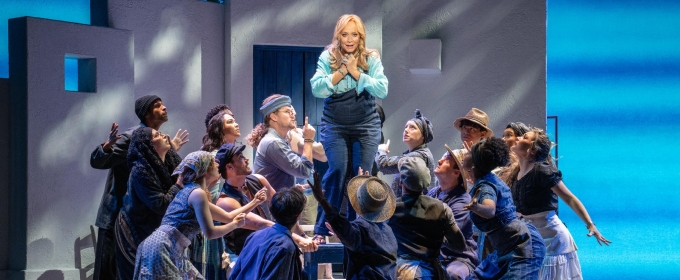 First Look at MAMMA MIA! as it Returns to Broadway
Performances begin this Saturday night, August 2 at the Winter Garden Theatre.
First Look at MAMMA MIA! as it Returns to Broadway
Performances begin this Saturday night, August 2 at the Winter Garden Theatre.
 Up on the Marquee: CHESS Returns to Broadway
Chess will begin performances Wednesday, October 15, 2025, and officially open Sunday, November 16, 2025.
Up on the Marquee: CHESS Returns to Broadway
Chess will begin performances Wednesday, October 15, 2025, and officially open Sunday, November 16, 2025.
 Josh Gad Rocks the Hollywood Bowl As JESUS CHRIST SUPERSTAR's 'King Herod'
Gad returned to the production after beating COVID to perform the iconic role.
Josh Gad Rocks the Hollywood Bowl As JESUS CHRIST SUPERSTAR's 'King Herod'
Gad returned to the production after beating COVID to perform the iconic role.
 Taye Diggs and Wayne Brady in MOULIN ROUGE! THE MUSICAL
Taye Diggs plays through September 28, with Wayne Brady staying through November 9.
Taye Diggs and Wayne Brady in MOULIN ROUGE! THE MUSICAL
Taye Diggs plays through September 28, with Wayne Brady staying through November 9.
 Jinkx Monsoon, Michael Urie, and More First Bows in OH, MARY!
They join the cast for performances through September 28 at the historic Lyceum Theatre.
Jinkx Monsoon, Michael Urie, and More First Bows in OH, MARY!
They join the cast for performances through September 28 at the historic Lyceum Theatre.
 First Look at MAMMA MIA! as it Returns to Broadway
Performances begin this Saturday night, August 2 at the Winter Garden Theatre.
First Look at MAMMA MIA! as it Returns to Broadway
Performances begin this Saturday night, August 2 at the Winter Garden Theatre.
 Review: ANNE BOLEYN: THE MUSICAL, Hever Castle
Hever Castle's heart returns to take her rightful place this August.
Review: ANNE BOLEYN: THE MUSICAL, Hever Castle
Hever Castle's heart returns to take her rightful place this August.
 Josh Gad Rocks the Hollywood Bowl As JESUS CHRIST SUPERSTAR's 'King Herod'
Gad returned to the production after beating COVID to perform the iconic role.
Josh Gad Rocks the Hollywood Bowl As JESUS CHRIST SUPERSTAR's 'King Herod'
Gad returned to the production after beating COVID to perform the iconic role.
 Taye Diggs and Wayne Brady in MOULIN ROUGE! THE MUSICAL
Taye Diggs plays through September 28, with Wayne Brady staying through November 9.
Taye Diggs and Wayne Brady in MOULIN ROUGE! THE MUSICAL
Taye Diggs plays through September 28, with Wayne Brady staying through November 9.
 Jinkx Monsoon, Michael Urie, and More First Bows in OH, MARY!
They join the cast for performances through September 28 at the historic Lyceum Theatre.
Jinkx Monsoon, Michael Urie, and More First Bows in OH, MARY!
They join the cast for performances through September 28 at the historic Lyceum Theatre.
 First Look at MAMMA MIA! as it Returns to Broadway
Performances begin this Saturday night, August 2 at the Winter Garden Theatre.
First Look at MAMMA MIA! as it Returns to Broadway
Performances begin this Saturday night, August 2 at the Winter Garden Theatre.
 Review: ANNE BOLEYN: THE MUSICAL, Hever Castle
Hever Castle's heart returns to take her rightful place this August.
Review: ANNE BOLEYN: THE MUSICAL, Hever Castle
Hever Castle's heart returns to take her rightful place this August.
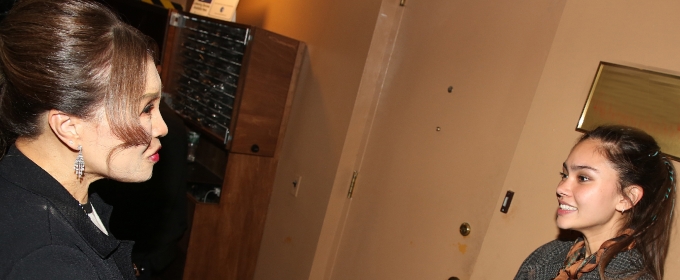 Princess of Thailand Visits HADESTOWN on Broadway
She attended the show to visit Hadestown cast member Myra Molloy, who plays Eurydice and is originally from Thailand. See photos here!
Princess of Thailand Visits HADESTOWN on Broadway
She attended the show to visit Hadestown cast member Myra Molloy, who plays Eurydice and is originally from Thailand. See photos here!
 Taye Diggs and Wayne Brady in MOULIN ROUGE! THE MUSICAL
Taye Diggs plays through September 28, with Wayne Brady staying through November 9.
Taye Diggs and Wayne Brady in MOULIN ROUGE! THE MUSICAL
Taye Diggs plays through September 28, with Wayne Brady staying through November 9.
 Jinkx Monsoon, Michael Urie, and More First Bows in OH, MARY!
They join the cast for performances through September 28 at the historic Lyceum Theatre.
Jinkx Monsoon, Michael Urie, and More First Bows in OH, MARY!
They join the cast for performances through September 28 at the historic Lyceum Theatre.
 First Look at MAMMA MIA! as it Returns to Broadway
Performances begin this Saturday night, August 2 at the Winter Garden Theatre.
First Look at MAMMA MIA! as it Returns to Broadway
Performances begin this Saturday night, August 2 at the Winter Garden Theatre.
 Review: ANNE BOLEYN: THE MUSICAL, Hever Castle
Hever Castle's heart returns to take her rightful place this August.
Review: ANNE BOLEYN: THE MUSICAL, Hever Castle
Hever Castle's heart returns to take her rightful place this August.
 Princess of Thailand Visits HADESTOWN on Broadway
She attended the show to visit Hadestown cast member Myra Molloy, who plays Eurydice and is originally from Thailand. See photos here!
Princess of Thailand Visits HADESTOWN on Broadway
She attended the show to visit Hadestown cast member Myra Molloy, who plays Eurydice and is originally from Thailand. See photos here!
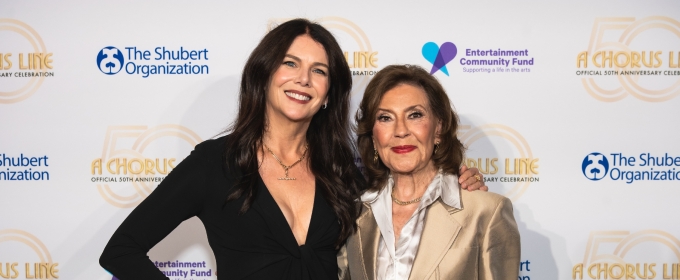 On the Red Carpet for A CHORUS LINE's 50th Anniversary
The event benefitted the Entertainment Community Fund’s programs serving dance professionals.
On the Red Carpet for A CHORUS LINE's 50th Anniversary
The event benefitted the Entertainment Community Fund’s programs serving dance professionals.
 Jinkx Monsoon, Michael Urie, and More First Bows in OH, MARY!
They join the cast for performances through September 28 at the historic Lyceum Theatre.
Jinkx Monsoon, Michael Urie, and More First Bows in OH, MARY!
They join the cast for performances through September 28 at the historic Lyceum Theatre.
 First Look at MAMMA MIA! as it Returns to Broadway
Performances begin this Saturday night, August 2 at the Winter Garden Theatre.
First Look at MAMMA MIA! as it Returns to Broadway
Performances begin this Saturday night, August 2 at the Winter Garden Theatre.
 Review: ANNE BOLEYN: THE MUSICAL, Hever Castle
Hever Castle's heart returns to take her rightful place this August.
Review: ANNE BOLEYN: THE MUSICAL, Hever Castle
Hever Castle's heart returns to take her rightful place this August.
 Princess of Thailand Visits HADESTOWN on Broadway
She attended the show to visit Hadestown cast member Myra Molloy, who plays Eurydice and is originally from Thailand. See photos here!
Princess of Thailand Visits HADESTOWN on Broadway
She attended the show to visit Hadestown cast member Myra Molloy, who plays Eurydice and is originally from Thailand. See photos here!
 On the Red Carpet for A CHORUS LINE's 50th Anniversary
The event benefitted the Entertainment Community Fund’s programs serving dance professionals.
On the Red Carpet for A CHORUS LINE's 50th Anniversary
The event benefitted the Entertainment Community Fund’s programs serving dance professionals.
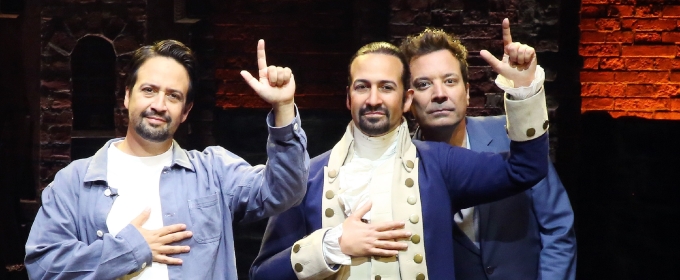 Lin-Manuel Miranda Poses With New Wax Figure
Miranda met his wax twin during a special reveal moment led by Jimmy Fallon.
Lin-Manuel Miranda Poses With New Wax Figure
Miranda met his wax twin during a special reveal moment led by Jimmy Fallon.
 First Look at MAMMA MIA! as it Returns to Broadway
Performances begin this Saturday night, August 2 at the Winter Garden Theatre.
First Look at MAMMA MIA! as it Returns to Broadway
Performances begin this Saturday night, August 2 at the Winter Garden Theatre.
 Review: ANNE BOLEYN: THE MUSICAL, Hever Castle
Hever Castle's heart returns to take her rightful place this August.
Review: ANNE BOLEYN: THE MUSICAL, Hever Castle
Hever Castle's heart returns to take her rightful place this August.
 Princess of Thailand Visits HADESTOWN on Broadway
She attended the show to visit Hadestown cast member Myra Molloy, who plays Eurydice and is originally from Thailand. See photos here!
Princess of Thailand Visits HADESTOWN on Broadway
She attended the show to visit Hadestown cast member Myra Molloy, who plays Eurydice and is originally from Thailand. See photos here!
 On the Red Carpet for A CHORUS LINE's 50th Anniversary
The event benefitted the Entertainment Community Fund’s programs serving dance professionals.
On the Red Carpet for A CHORUS LINE's 50th Anniversary
The event benefitted the Entertainment Community Fund’s programs serving dance professionals.
 Lin-Manuel Miranda Poses With New Wax Figure
Miranda met his wax twin during a special reveal moment led by Jimmy Fallon.
Lin-Manuel Miranda Poses With New Wax Figure
Miranda met his wax twin during a special reveal moment led by Jimmy Fallon.
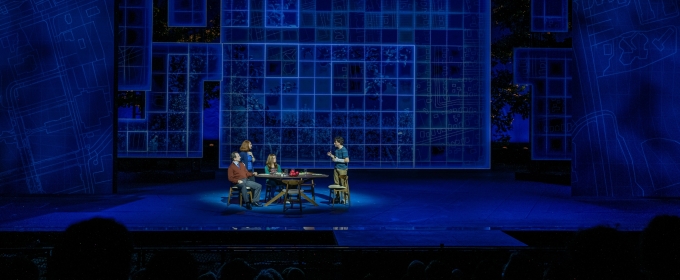 Michael Fabisch, Rob McClure, Jackie Burns and More in DEAR EVAN HANSEN at The Muny
The musical is now running through August 3.
Michael Fabisch, Rob McClure, Jackie Burns and More in DEAR EVAN HANSEN at The Muny
The musical is now running through August 3.
 Review: ANNE BOLEYN: THE MUSICAL, Hever Castle
Hever Castle's heart returns to take her rightful place this August.
Review: ANNE BOLEYN: THE MUSICAL, Hever Castle
Hever Castle's heart returns to take her rightful place this August.
 Princess of Thailand Visits HADESTOWN on Broadway
She attended the show to visit Hadestown cast member Myra Molloy, who plays Eurydice and is originally from Thailand. See photos here!
Princess of Thailand Visits HADESTOWN on Broadway
She attended the show to visit Hadestown cast member Myra Molloy, who plays Eurydice and is originally from Thailand. See photos here!
 On the Red Carpet for A CHORUS LINE's 50th Anniversary
The event benefitted the Entertainment Community Fund’s programs serving dance professionals.
On the Red Carpet for A CHORUS LINE's 50th Anniversary
The event benefitted the Entertainment Community Fund’s programs serving dance professionals.
 Lin-Manuel Miranda Poses With New Wax Figure
Miranda met his wax twin during a special reveal moment led by Jimmy Fallon.
Lin-Manuel Miranda Poses With New Wax Figure
Miranda met his wax twin during a special reveal moment led by Jimmy Fallon.
 Michael Fabisch, Rob McClure, Jackie Burns and More in DEAR EVAN HANSEN at The Muny
The musical is now running through August 3.
Michael Fabisch, Rob McClure, Jackie Burns and More in DEAR EVAN HANSEN at The Muny
The musical is now running through August 3.
 Lin-Manuel Miranda Celebrates HAMILTON and More on THE TONIGHT SHOW STARRING JIMMY FALLON
The episode airs tonight on NBC from 11:35 p.m. to 12:35 a.m. ET/PT
Lin-Manuel Miranda Celebrates HAMILTON and More on THE TONIGHT SHOW STARRING JIMMY FALLON
The episode airs tonight on NBC from 11:35 p.m. to 12:35 a.m. ET/PT
 Princess of Thailand Visits HADESTOWN on Broadway
She attended the show to visit Hadestown cast member Myra Molloy, who plays Eurydice and is originally from Thailand. See photos here!
Princess of Thailand Visits HADESTOWN on Broadway
She attended the show to visit Hadestown cast member Myra Molloy, who plays Eurydice and is originally from Thailand. See photos here!
 On the Red Carpet for A CHORUS LINE's 50th Anniversary
The event benefitted the Entertainment Community Fund’s programs serving dance professionals.
On the Red Carpet for A CHORUS LINE's 50th Anniversary
The event benefitted the Entertainment Community Fund’s programs serving dance professionals.
 Lin-Manuel Miranda Poses With New Wax Figure
Miranda met his wax twin during a special reveal moment led by Jimmy Fallon.
Lin-Manuel Miranda Poses With New Wax Figure
Miranda met his wax twin during a special reveal moment led by Jimmy Fallon.
 Michael Fabisch, Rob McClure, Jackie Burns and More in DEAR EVAN HANSEN at The Muny
The musical is now running through August 3.
Michael Fabisch, Rob McClure, Jackie Burns and More in DEAR EVAN HANSEN at The Muny
The musical is now running through August 3.
 Lin-Manuel Miranda Celebrates HAMILTON and More on THE TONIGHT SHOW STARRING JIMMY FALLON
The episode airs tonight on NBC from 11:35 p.m. to 12:35 a.m. ET/PT
Lin-Manuel Miranda Celebrates HAMILTON and More on THE TONIGHT SHOW STARRING JIMMY FALLON
The episode airs tonight on NBC from 11:35 p.m. to 12:35 a.m. ET/PT
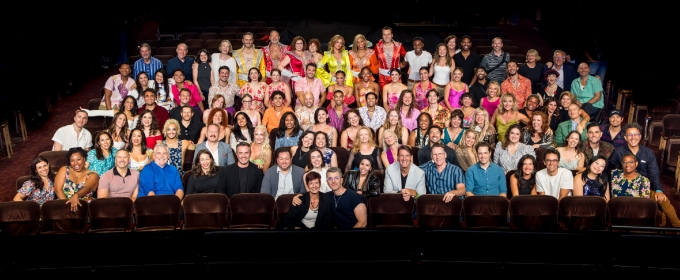 MAMMA MIA! on Broadway Hosts Alumni Night
Mamma Mia will play at the Winter Garden through Sunday, February 1, 2026.
MAMMA MIA! on Broadway Hosts Alumni Night
Mamma Mia will play at the Winter Garden through Sunday, February 1, 2026.
 On the Red Carpet for A CHORUS LINE's 50th Anniversary
The event benefitted the Entertainment Community Fund’s programs serving dance professionals.
On the Red Carpet for A CHORUS LINE's 50th Anniversary
The event benefitted the Entertainment Community Fund’s programs serving dance professionals.
 Lin-Manuel Miranda Poses With New Wax Figure
Miranda met his wax twin during a special reveal moment led by Jimmy Fallon.
Lin-Manuel Miranda Poses With New Wax Figure
Miranda met his wax twin during a special reveal moment led by Jimmy Fallon.
 Michael Fabisch, Rob McClure, Jackie Burns and More in DEAR EVAN HANSEN at The Muny
The musical is now running through August 3.
Michael Fabisch, Rob McClure, Jackie Burns and More in DEAR EVAN HANSEN at The Muny
The musical is now running through August 3.
 Lin-Manuel Miranda Celebrates HAMILTON and More on THE TONIGHT SHOW STARRING JIMMY FALLON
The episode airs tonight on NBC from 11:35 p.m. to 12:35 a.m. ET/PT
Lin-Manuel Miranda Celebrates HAMILTON and More on THE TONIGHT SHOW STARRING JIMMY FALLON
The episode airs tonight on NBC from 11:35 p.m. to 12:35 a.m. ET/PT
 MAMMA MIA! on Broadway Hosts Alumni Night
Mamma Mia will play at the Winter Garden through Sunday, February 1, 2026.
MAMMA MIA! on Broadway Hosts Alumni Night
Mamma Mia will play at the Winter Garden through Sunday, February 1, 2026.
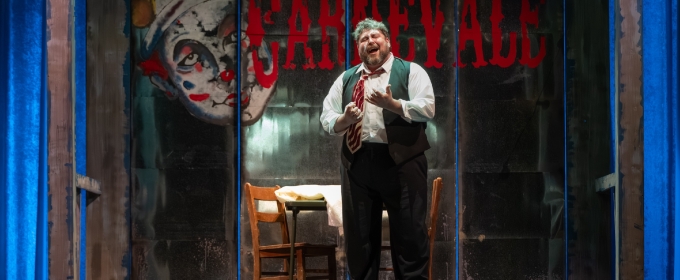 Review: 'JOSEPHINE' & 'PAGLIACCI' at Union Avenue Opera
runs through August 2
Review: 'JOSEPHINE' & 'PAGLIACCI' at Union Avenue Opera
runs through August 2
 Lin-Manuel Miranda Poses With New Wax Figure
Miranda met his wax twin during a special reveal moment led by Jimmy Fallon.
Lin-Manuel Miranda Poses With New Wax Figure
Miranda met his wax twin during a special reveal moment led by Jimmy Fallon.
 Michael Fabisch, Rob McClure, Jackie Burns and More in DEAR EVAN HANSEN at The Muny
The musical is now running through August 3.
Michael Fabisch, Rob McClure, Jackie Burns and More in DEAR EVAN HANSEN at The Muny
The musical is now running through August 3.
 Lin-Manuel Miranda Celebrates HAMILTON and More on THE TONIGHT SHOW STARRING JIMMY FALLON
The episode airs tonight on NBC from 11:35 p.m. to 12:35 a.m. ET/PT
Lin-Manuel Miranda Celebrates HAMILTON and More on THE TONIGHT SHOW STARRING JIMMY FALLON
The episode airs tonight on NBC from 11:35 p.m. to 12:35 a.m. ET/PT
 MAMMA MIA! on Broadway Hosts Alumni Night
Mamma Mia will play at the Winter Garden through Sunday, February 1, 2026.
MAMMA MIA! on Broadway Hosts Alumni Night
Mamma Mia will play at the Winter Garden through Sunday, February 1, 2026.
 Review: 'JOSEPHINE' & 'PAGLIACCI' at Union Avenue Opera
runs through August 2
Review: 'JOSEPHINE' & 'PAGLIACCI' at Union Avenue Opera
runs through August 2
 Inside the HAMILTEN Celebration and Block Party
Yesterday, Wednesday, August 6, 2025, Hamilton celebrated 10 years on Broadway with celebrations throughout the day.
Inside the HAMILTEN Celebration and Block Party
Yesterday, Wednesday, August 6, 2025, Hamilton celebrated 10 years on Broadway with celebrations throughout the day.
 Michael Fabisch, Rob McClure, Jackie Burns and More in DEAR EVAN HANSEN at The Muny
The musical is now running through August 3.
Michael Fabisch, Rob McClure, Jackie Burns and More in DEAR EVAN HANSEN at The Muny
The musical is now running through August 3.
 Lin-Manuel Miranda Celebrates HAMILTON and More on THE TONIGHT SHOW STARRING JIMMY FALLON
The episode airs tonight on NBC from 11:35 p.m. to 12:35 a.m. ET/PT
Lin-Manuel Miranda Celebrates HAMILTON and More on THE TONIGHT SHOW STARRING JIMMY FALLON
The episode airs tonight on NBC from 11:35 p.m. to 12:35 a.m. ET/PT
 MAMMA MIA! on Broadway Hosts Alumni Night
Mamma Mia will play at the Winter Garden through Sunday, February 1, 2026.
MAMMA MIA! on Broadway Hosts Alumni Night
Mamma Mia will play at the Winter Garden through Sunday, February 1, 2026.
 Review: 'JOSEPHINE' & 'PAGLIACCI' at Union Avenue Opera
runs through August 2
Review: 'JOSEPHINE' & 'PAGLIACCI' at Union Avenue Opera
runs through August 2
 Inside the HAMILTEN Celebration and Block Party
Yesterday, Wednesday, August 6, 2025, Hamilton celebrated 10 years on Broadway with celebrations throughout the day.
Inside the HAMILTEN Celebration and Block Party
Yesterday, Wednesday, August 6, 2025, Hamilton celebrated 10 years on Broadway with celebrations throughout the day.
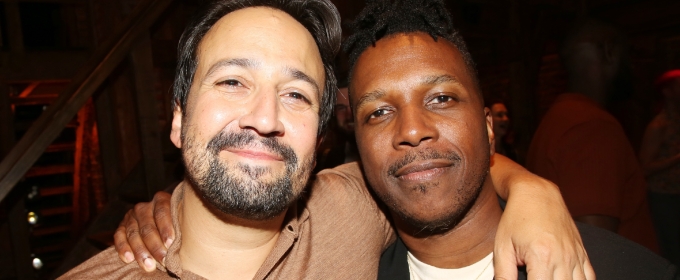 More From Inside the HAMILTON's 'Hamil-TEN' Celebration
Hamilton opened at the Richard Rodgers Theatre on August 6, 2015.
More From Inside the HAMILTON's 'Hamil-TEN' Celebration
Hamilton opened at the Richard Rodgers Theatre on August 6, 2015.
 Lin-Manuel Miranda Celebrates HAMILTON and More on THE TONIGHT SHOW STARRING JIMMY FALLON
The episode airs tonight on NBC from 11:35 p.m. to 12:35 a.m. ET/PT
Lin-Manuel Miranda Celebrates HAMILTON and More on THE TONIGHT SHOW STARRING JIMMY FALLON
The episode airs tonight on NBC from 11:35 p.m. to 12:35 a.m. ET/PT
 MAMMA MIA! on Broadway Hosts Alumni Night
Mamma Mia will play at the Winter Garden through Sunday, February 1, 2026.
MAMMA MIA! on Broadway Hosts Alumni Night
Mamma Mia will play at the Winter Garden through Sunday, February 1, 2026.
 Review: 'JOSEPHINE' & 'PAGLIACCI' at Union Avenue Opera
runs through August 2
Review: 'JOSEPHINE' & 'PAGLIACCI' at Union Avenue Opera
runs through August 2
 Inside the HAMILTEN Celebration and Block Party
Yesterday, Wednesday, August 6, 2025, Hamilton celebrated 10 years on Broadway with celebrations throughout the day.
Inside the HAMILTEN Celebration and Block Party
Yesterday, Wednesday, August 6, 2025, Hamilton celebrated 10 years on Broadway with celebrations throughout the day.
 More From Inside the HAMILTON's 'Hamil-TEN' Celebration
Hamilton opened at the Richard Rodgers Theatre on August 6, 2015.
More From Inside the HAMILTON's 'Hamil-TEN' Celebration
Hamilton opened at the Richard Rodgers Theatre on August 6, 2015.
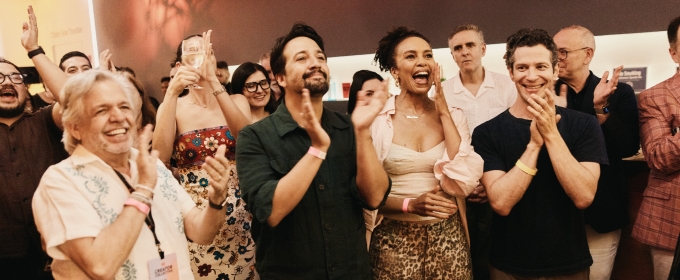 Lin-Manuel Miranda and Eisa Davis’s WARRIORS Silent Disco
The event began with a cocktail party in LCT3’s Claire Tow Theater followed by the dance party out on The Dance Floor at Josie Robertson Plaza.
Lin-Manuel Miranda and Eisa Davis’s WARRIORS Silent Disco
The event began with a cocktail party in LCT3’s Claire Tow Theater followed by the dance party out on The Dance Floor at Josie Robertson Plaza.
 MAMMA MIA! on Broadway Hosts Alumni Night
Mamma Mia will play at the Winter Garden through Sunday, February 1, 2026.
MAMMA MIA! on Broadway Hosts Alumni Night
Mamma Mia will play at the Winter Garden through Sunday, February 1, 2026.
 Review: 'JOSEPHINE' & 'PAGLIACCI' at Union Avenue Opera
runs through August 2
Review: 'JOSEPHINE' & 'PAGLIACCI' at Union Avenue Opera
runs through August 2
 Inside the HAMILTEN Celebration and Block Party
Yesterday, Wednesday, August 6, 2025, Hamilton celebrated 10 years on Broadway with celebrations throughout the day.
Inside the HAMILTEN Celebration and Block Party
Yesterday, Wednesday, August 6, 2025, Hamilton celebrated 10 years on Broadway with celebrations throughout the day.
 More From Inside the HAMILTON's 'Hamil-TEN' Celebration
Hamilton opened at the Richard Rodgers Theatre on August 6, 2015.
More From Inside the HAMILTON's 'Hamil-TEN' Celebration
Hamilton opened at the Richard Rodgers Theatre on August 6, 2015.
 Lin-Manuel Miranda and Eisa Davis’s WARRIORS Silent Disco
The event began with a cocktail party in LCT3’s Claire Tow Theater followed by the dance party out on The Dance Floor at Josie Robertson Plaza.
Lin-Manuel Miranda and Eisa Davis’s WARRIORS Silent Disco
The event began with a cocktail party in LCT3’s Claire Tow Theater followed by the dance party out on The Dance Floor at Josie Robertson Plaza.
 Todrick Hall, Jess Folley, and More in BURLESQUE THE MUSICAL
The show is currently playing at the Savoy Theatre in London’s West End until 6 September.
Todrick Hall, Jess Folley, and More in BURLESQUE THE MUSICAL
The show is currently playing at the Savoy Theatre in London’s West End until 6 September.
 Review: 'JOSEPHINE' & 'PAGLIACCI' at Union Avenue Opera
runs through August 2
Review: 'JOSEPHINE' & 'PAGLIACCI' at Union Avenue Opera
runs through August 2
 Inside the HAMILTEN Celebration and Block Party
Yesterday, Wednesday, August 6, 2025, Hamilton celebrated 10 years on Broadway with celebrations throughout the day.
Inside the HAMILTEN Celebration and Block Party
Yesterday, Wednesday, August 6, 2025, Hamilton celebrated 10 years on Broadway with celebrations throughout the day.
 More From Inside the HAMILTON's 'Hamil-TEN' Celebration
Hamilton opened at the Richard Rodgers Theatre on August 6, 2015.
More From Inside the HAMILTON's 'Hamil-TEN' Celebration
Hamilton opened at the Richard Rodgers Theatre on August 6, 2015.
 Lin-Manuel Miranda and Eisa Davis’s WARRIORS Silent Disco
The event began with a cocktail party in LCT3’s Claire Tow Theater followed by the dance party out on The Dance Floor at Josie Robertson Plaza.
Lin-Manuel Miranda and Eisa Davis’s WARRIORS Silent Disco
The event began with a cocktail party in LCT3’s Claire Tow Theater followed by the dance party out on The Dance Floor at Josie Robertson Plaza.
 Todrick Hall, Jess Folley, and More in BURLESQUE THE MUSICAL
The show is currently playing at the Savoy Theatre in London’s West End until 6 September.
Todrick Hall, Jess Folley, and More in BURLESQUE THE MUSICAL
The show is currently playing at the Savoy Theatre in London’s West End until 6 September.
 Review: MJ Dazzles at Broadway San Jose
Playing now thru August 3, this extraordinary show is an experience you can't miss!
Review: MJ Dazzles at Broadway San Jose
Playing now thru August 3, this extraordinary show is an experience you can't miss!
 Inside the HAMILTEN Celebration and Block Party
Yesterday, Wednesday, August 6, 2025, Hamilton celebrated 10 years on Broadway with celebrations throughout the day.
Inside the HAMILTEN Celebration and Block Party
Yesterday, Wednesday, August 6, 2025, Hamilton celebrated 10 years on Broadway with celebrations throughout the day.
 More From Inside the HAMILTON's 'Hamil-TEN' Celebration
Hamilton opened at the Richard Rodgers Theatre on August 6, 2015.
More From Inside the HAMILTON's 'Hamil-TEN' Celebration
Hamilton opened at the Richard Rodgers Theatre on August 6, 2015.
 Lin-Manuel Miranda and Eisa Davis’s WARRIORS Silent Disco
The event began with a cocktail party in LCT3’s Claire Tow Theater followed by the dance party out on The Dance Floor at Josie Robertson Plaza.
Lin-Manuel Miranda and Eisa Davis’s WARRIORS Silent Disco
The event began with a cocktail party in LCT3’s Claire Tow Theater followed by the dance party out on The Dance Floor at Josie Robertson Plaza.
 Todrick Hall, Jess Folley, and More in BURLESQUE THE MUSICAL
The show is currently playing at the Savoy Theatre in London’s West End until 6 September.
Todrick Hall, Jess Folley, and More in BURLESQUE THE MUSICAL
The show is currently playing at the Savoy Theatre in London’s West End until 6 September.
 Review: MJ Dazzles at Broadway San Jose
Playing now thru August 3, this extraordinary show is an experience you can't miss!
Review: MJ Dazzles at Broadway San Jose
Playing now thru August 3, this extraordinary show is an experience you can't miss!
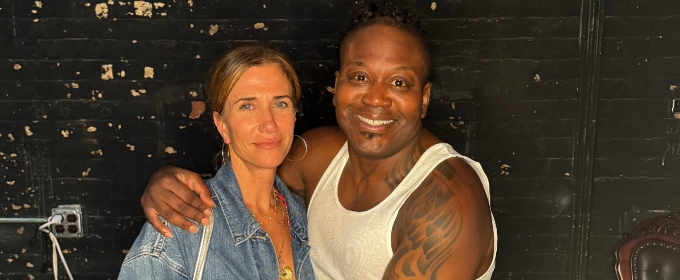 Kristen Wiig Visits OH, MARY! With Tituss Burgess and More
Burgess played his final performance in the musical this past weekend.
Kristen Wiig Visits OH, MARY! With Tituss Burgess and More
Burgess played his final performance in the musical this past weekend.
 More From Inside the HAMILTON's 'Hamil-TEN' Celebration
Hamilton opened at the Richard Rodgers Theatre on August 6, 2015.
More From Inside the HAMILTON's 'Hamil-TEN' Celebration
Hamilton opened at the Richard Rodgers Theatre on August 6, 2015.
 Lin-Manuel Miranda and Eisa Davis’s WARRIORS Silent Disco
The event began with a cocktail party in LCT3’s Claire Tow Theater followed by the dance party out on The Dance Floor at Josie Robertson Plaza.
Lin-Manuel Miranda and Eisa Davis’s WARRIORS Silent Disco
The event began with a cocktail party in LCT3’s Claire Tow Theater followed by the dance party out on The Dance Floor at Josie Robertson Plaza.
 Todrick Hall, Jess Folley, and More in BURLESQUE THE MUSICAL
The show is currently playing at the Savoy Theatre in London’s West End until 6 September.
Todrick Hall, Jess Folley, and More in BURLESQUE THE MUSICAL
The show is currently playing at the Savoy Theatre in London’s West End until 6 September.
 Review: MJ Dazzles at Broadway San Jose
Playing now thru August 3, this extraordinary show is an experience you can't miss!
Review: MJ Dazzles at Broadway San Jose
Playing now thru August 3, this extraordinary show is an experience you can't miss!
 Kristen Wiig Visits OH, MARY! With Tituss Burgess and More
Burgess played his final performance in the musical this past weekend.
Kristen Wiig Visits OH, MARY! With Tituss Burgess and More
Burgess played his final performance in the musical this past weekend.
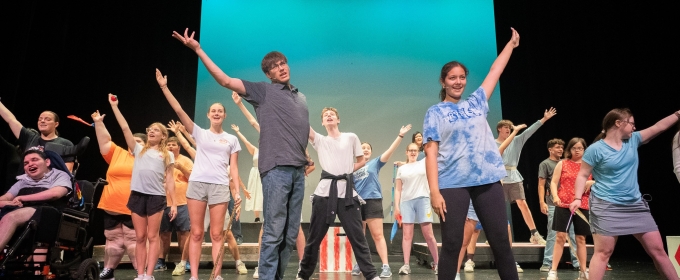 Feature: PIPPIN at The Off-Beat Players
Pippin will run through August 2 at 7:30 at the Performing Arts Center of Greenwich Country Day School.
Feature: PIPPIN at The Off-Beat Players
Pippin will run through August 2 at 7:30 at the Performing Arts Center of Greenwich Country Day School.
 Lin-Manuel Miranda and Eisa Davis’s WARRIORS Silent Disco
The event began with a cocktail party in LCT3’s Claire Tow Theater followed by the dance party out on The Dance Floor at Josie Robertson Plaza.
Lin-Manuel Miranda and Eisa Davis’s WARRIORS Silent Disco
The event began with a cocktail party in LCT3’s Claire Tow Theater followed by the dance party out on The Dance Floor at Josie Robertson Plaza.
 Todrick Hall, Jess Folley, and More in BURLESQUE THE MUSICAL
The show is currently playing at the Savoy Theatre in London’s West End until 6 September.
Todrick Hall, Jess Folley, and More in BURLESQUE THE MUSICAL
The show is currently playing at the Savoy Theatre in London’s West End until 6 September.
 Review: MJ Dazzles at Broadway San Jose
Playing now thru August 3, this extraordinary show is an experience you can't miss!
Review: MJ Dazzles at Broadway San Jose
Playing now thru August 3, this extraordinary show is an experience you can't miss!
 Kristen Wiig Visits OH, MARY! With Tituss Burgess and More
Burgess played his final performance in the musical this past weekend.
Kristen Wiig Visits OH, MARY! With Tituss Burgess and More
Burgess played his final performance in the musical this past weekend.
 Feature: PIPPIN at The Off-Beat Players
Pippin will run through August 2 at 7:30 at the Performing Arts Center of Greenwich Country Day School.
Feature: PIPPIN at The Off-Beat Players
Pippin will run through August 2 at 7:30 at the Performing Arts Center of Greenwich Country Day School.
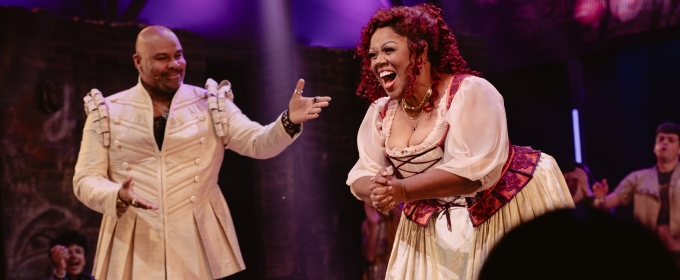 James Monroe Iglehart and Cheryl Porter Take Bows in & JULIET
Iglehart plays 'Lance,' and Porter plays 'Angélique,' taking over their roles following Joey Fatone and Jeannette Bayardelle respectively.
James Monroe Iglehart and Cheryl Porter Take Bows in & JULIET
Iglehart plays 'Lance,' and Porter plays 'Angélique,' taking over their roles following Joey Fatone and Jeannette Bayardelle respectively.
 Todrick Hall, Jess Folley, and More in BURLESQUE THE MUSICAL
The show is currently playing at the Savoy Theatre in London’s West End until 6 September.
Todrick Hall, Jess Folley, and More in BURLESQUE THE MUSICAL
The show is currently playing at the Savoy Theatre in London’s West End until 6 September.
 Review: MJ Dazzles at Broadway San Jose
Playing now thru August 3, this extraordinary show is an experience you can't miss!
Review: MJ Dazzles at Broadway San Jose
Playing now thru August 3, this extraordinary show is an experience you can't miss!
 Kristen Wiig Visits OH, MARY! With Tituss Burgess and More
Burgess played his final performance in the musical this past weekend.
Kristen Wiig Visits OH, MARY! With Tituss Burgess and More
Burgess played his final performance in the musical this past weekend.
 Feature: PIPPIN at The Off-Beat Players
Pippin will run through August 2 at 7:30 at the Performing Arts Center of Greenwich Country Day School.
Feature: PIPPIN at The Off-Beat Players
Pippin will run through August 2 at 7:30 at the Performing Arts Center of Greenwich Country Day School.
 James Monroe Iglehart and Cheryl Porter Take Bows in & JULIET
Iglehart plays 'Lance,' and Porter plays 'Angélique,' taking over their roles following Joey Fatone and Jeannette Bayardelle respectively.
James Monroe Iglehart and Cheryl Porter Take Bows in & JULIET
Iglehart plays 'Lance,' and Porter plays 'Angélique,' taking over their roles following Joey Fatone and Jeannette Bayardelle respectively.
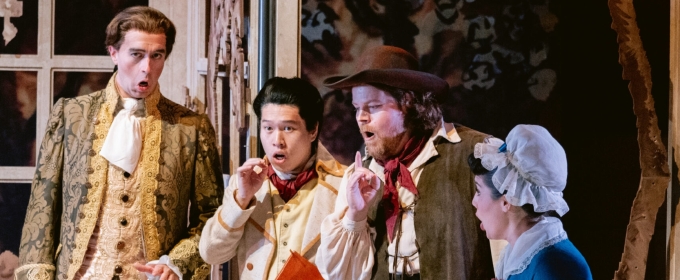 LE COMTE ORY At Merola Opera Summer Festival
Metropolitan Opera conductor Pierre Vallet makes his Merola debut leading the orchestra.
LE COMTE ORY At Merola Opera Summer Festival
Metropolitan Opera conductor Pierre Vallet makes his Merola debut leading the orchestra.
 Review: MJ Dazzles at Broadway San Jose
Playing now thru August 3, this extraordinary show is an experience you can't miss!
Review: MJ Dazzles at Broadway San Jose
Playing now thru August 3, this extraordinary show is an experience you can't miss!
 Kristen Wiig Visits OH, MARY! With Tituss Burgess and More
Burgess played his final performance in the musical this past weekend.
Kristen Wiig Visits OH, MARY! With Tituss Burgess and More
Burgess played his final performance in the musical this past weekend.
 Feature: PIPPIN at The Off-Beat Players
Pippin will run through August 2 at 7:30 at the Performing Arts Center of Greenwich Country Day School.
Feature: PIPPIN at The Off-Beat Players
Pippin will run through August 2 at 7:30 at the Performing Arts Center of Greenwich Country Day School.
 James Monroe Iglehart and Cheryl Porter Take Bows in & JULIET
Iglehart plays 'Lance,' and Porter plays 'Angélique,' taking over their roles following Joey Fatone and Jeannette Bayardelle respectively.
James Monroe Iglehart and Cheryl Porter Take Bows in & JULIET
Iglehart plays 'Lance,' and Porter plays 'Angélique,' taking over their roles following Joey Fatone and Jeannette Bayardelle respectively.
 LE COMTE ORY At Merola Opera Summer Festival
Metropolitan Opera conductor Pierre Vallet makes his Merola debut leading the orchestra.
LE COMTE ORY At Merola Opera Summer Festival
Metropolitan Opera conductor Pierre Vallet makes his Merola debut leading the orchestra.
 Brenda Pressley in PURPOSE on Broadway
PURPOSE is playing at the Helen Hayes Theater through August 31st, 2025.
Brenda Pressley in PURPOSE on Broadway
PURPOSE is playing at the Helen Hayes Theater through August 31st, 2025.
 Kristen Wiig Visits OH, MARY! With Tituss Burgess and More
Burgess played his final performance in the musical this past weekend.
Kristen Wiig Visits OH, MARY! With Tituss Burgess and More
Burgess played his final performance in the musical this past weekend.
 Feature: PIPPIN at The Off-Beat Players
Pippin will run through August 2 at 7:30 at the Performing Arts Center of Greenwich Country Day School.
Feature: PIPPIN at The Off-Beat Players
Pippin will run through August 2 at 7:30 at the Performing Arts Center of Greenwich Country Day School.
 James Monroe Iglehart and Cheryl Porter Take Bows in & JULIET
Iglehart plays 'Lance,' and Porter plays 'Angélique,' taking over their roles following Joey Fatone and Jeannette Bayardelle respectively.
James Monroe Iglehart and Cheryl Porter Take Bows in & JULIET
Iglehart plays 'Lance,' and Porter plays 'Angélique,' taking over their roles following Joey Fatone and Jeannette Bayardelle respectively.
 LE COMTE ORY At Merola Opera Summer Festival
Metropolitan Opera conductor Pierre Vallet makes his Merola debut leading the orchestra.
LE COMTE ORY At Merola Opera Summer Festival
Metropolitan Opera conductor Pierre Vallet makes his Merola debut leading the orchestra.
 Brenda Pressley in PURPOSE on Broadway
PURPOSE is playing at the Helen Hayes Theater through August 31st, 2025.
Brenda Pressley in PURPOSE on Broadway
PURPOSE is playing at the Helen Hayes Theater through August 31st, 2025.
 Aimie Atkinson and More in SAVING MOZART
Performances will run until 30 August 2025.
Aimie Atkinson and More in SAVING MOZART
Performances will run until 30 August 2025.
 Feature: PIPPIN at The Off-Beat Players
Pippin will run through August 2 at 7:30 at the Performing Arts Center of Greenwich Country Day School.
Feature: PIPPIN at The Off-Beat Players
Pippin will run through August 2 at 7:30 at the Performing Arts Center of Greenwich Country Day School.
 James Monroe Iglehart and Cheryl Porter Take Bows in & JULIET
Iglehart plays 'Lance,' and Porter plays 'Angélique,' taking over their roles following Joey Fatone and Jeannette Bayardelle respectively.
James Monroe Iglehart and Cheryl Porter Take Bows in & JULIET
Iglehart plays 'Lance,' and Porter plays 'Angélique,' taking over their roles following Joey Fatone and Jeannette Bayardelle respectively.
 LE COMTE ORY At Merola Opera Summer Festival
Metropolitan Opera conductor Pierre Vallet makes his Merola debut leading the orchestra.
LE COMTE ORY At Merola Opera Summer Festival
Metropolitan Opera conductor Pierre Vallet makes his Merola debut leading the orchestra.
 Brenda Pressley in PURPOSE on Broadway
PURPOSE is playing at the Helen Hayes Theater through August 31st, 2025.
Brenda Pressley in PURPOSE on Broadway
PURPOSE is playing at the Helen Hayes Theater through August 31st, 2025.
 Aimie Atkinson and More in SAVING MOZART
Performances will run until 30 August 2025.
Aimie Atkinson and More in SAVING MOZART
Performances will run until 30 August 2025.
 Cynthia Erivo and More in JESUS CHRIST SUPERSTAR
The cast also featured Phillipa Soo as Mary Magdalene and John Stamos as King Herod; Milo Manheim as Peter; and Raúl Esparza as Pontius Pilate.
Cynthia Erivo and More in JESUS CHRIST SUPERSTAR
The cast also featured Phillipa Soo as Mary Magdalene and John Stamos as King Herod; Milo Manheim as Peter; and Raúl Esparza as Pontius Pilate.
 James Monroe Iglehart and Cheryl Porter Take Bows in & JULIET
Iglehart plays 'Lance,' and Porter plays 'Angélique,' taking over their roles following Joey Fatone and Jeannette Bayardelle respectively.
James Monroe Iglehart and Cheryl Porter Take Bows in & JULIET
Iglehart plays 'Lance,' and Porter plays 'Angélique,' taking over their roles following Joey Fatone and Jeannette Bayardelle respectively.
 LE COMTE ORY At Merola Opera Summer Festival
Metropolitan Opera conductor Pierre Vallet makes his Merola debut leading the orchestra.
LE COMTE ORY At Merola Opera Summer Festival
Metropolitan Opera conductor Pierre Vallet makes his Merola debut leading the orchestra.
 Brenda Pressley in PURPOSE on Broadway
PURPOSE is playing at the Helen Hayes Theater through August 31st, 2025.
Brenda Pressley in PURPOSE on Broadway
PURPOSE is playing at the Helen Hayes Theater through August 31st, 2025.
 Aimie Atkinson and More in SAVING MOZART
Performances will run until 30 August 2025.
Aimie Atkinson and More in SAVING MOZART
Performances will run until 30 August 2025.
 Cynthia Erivo and More in JESUS CHRIST SUPERSTAR
The cast also featured Phillipa Soo as Mary Magdalene and John Stamos as King Herod; Milo Manheim as Peter; and Raúl Esparza as Pontius Pilate.
Cynthia Erivo and More in JESUS CHRIST SUPERSTAR
The cast also featured Phillipa Soo as Mary Magdalene and John Stamos as King Herod; Milo Manheim as Peter; and Raúl Esparza as Pontius Pilate.
 Photo: MY NEIGHBOUR TOTORO Releases New Artwork
The new artwork captures the iconic bus stop scene where Mei and Satuski encounter the forest spirit Totoro for the first time together.
Photo: MY NEIGHBOUR TOTORO Releases New Artwork
The new artwork captures the iconic bus stop scene where Mei and Satuski encounter the forest spirit Totoro for the first time together.
 LE COMTE ORY At Merola Opera Summer Festival
Metropolitan Opera conductor Pierre Vallet makes his Merola debut leading the orchestra.
LE COMTE ORY At Merola Opera Summer Festival
Metropolitan Opera conductor Pierre Vallet makes his Merola debut leading the orchestra.
 Brenda Pressley in PURPOSE on Broadway
PURPOSE is playing at the Helen Hayes Theater through August 31st, 2025.
Brenda Pressley in PURPOSE on Broadway
PURPOSE is playing at the Helen Hayes Theater through August 31st, 2025.
 Aimie Atkinson and More in SAVING MOZART
Performances will run until 30 August 2025.
Aimie Atkinson and More in SAVING MOZART
Performances will run until 30 August 2025.
 Cynthia Erivo and More in JESUS CHRIST SUPERSTAR
The cast also featured Phillipa Soo as Mary Magdalene and John Stamos as King Herod; Milo Manheim as Peter; and Raúl Esparza as Pontius Pilate.
Cynthia Erivo and More in JESUS CHRIST SUPERSTAR
The cast also featured Phillipa Soo as Mary Magdalene and John Stamos as King Herod; Milo Manheim as Peter; and Raúl Esparza as Pontius Pilate.
 Photo: MY NEIGHBOUR TOTORO Releases New Artwork
The new artwork captures the iconic bus stop scene where Mei and Satuski encounter the forest spirit Totoro for the first time together.
Photo: MY NEIGHBOUR TOTORO Releases New Artwork
The new artwork captures the iconic bus stop scene where Mei and Satuski encounter the forest spirit Totoro for the first time together.
 Lea Salonga, Arielle Jacobs, and More in Theatre Group Asia's INTO THE WOODS
The show pays tribute to the late Bobby Garcia, Theatre Group Asia's co-founder.
Lea Salonga, Arielle Jacobs, and More in Theatre Group Asia's INTO THE WOODS
The show pays tribute to the late Bobby Garcia, Theatre Group Asia's co-founder.
 Brenda Pressley in PURPOSE on Broadway
PURPOSE is playing at the Helen Hayes Theater through August 31st, 2025.
Brenda Pressley in PURPOSE on Broadway
PURPOSE is playing at the Helen Hayes Theater through August 31st, 2025.
 Aimie Atkinson and More in SAVING MOZART
Performances will run until 30 August 2025.
Aimie Atkinson and More in SAVING MOZART
Performances will run until 30 August 2025.
 Cynthia Erivo and More in JESUS CHRIST SUPERSTAR
The cast also featured Phillipa Soo as Mary Magdalene and John Stamos as King Herod; Milo Manheim as Peter; and Raúl Esparza as Pontius Pilate.
Cynthia Erivo and More in JESUS CHRIST SUPERSTAR
The cast also featured Phillipa Soo as Mary Magdalene and John Stamos as King Herod; Milo Manheim as Peter; and Raúl Esparza as Pontius Pilate.
 Photo: MY NEIGHBOUR TOTORO Releases New Artwork
The new artwork captures the iconic bus stop scene where Mei and Satuski encounter the forest spirit Totoro for the first time together.
Photo: MY NEIGHBOUR TOTORO Releases New Artwork
The new artwork captures the iconic bus stop scene where Mei and Satuski encounter the forest spirit Totoro for the first time together.
 Lea Salonga, Arielle Jacobs, and More in Theatre Group Asia's INTO THE WOODS
The show pays tribute to the late Bobby Garcia, Theatre Group Asia's co-founder.
Lea Salonga, Arielle Jacobs, and More in Theatre Group Asia's INTO THE WOODS
The show pays tribute to the late Bobby Garcia, Theatre Group Asia's co-founder.
 See Costumes Worn by Meryl Streep, Al Pacino & More in the Public's Costume Exhibit
The exhibit will be open Tuesday-Sunday: 11am-2pm and 5-8pm.
See Costumes Worn by Meryl Streep, Al Pacino & More in the Public's Costume Exhibit
The exhibit will be open Tuesday-Sunday: 11am-2pm and 5-8pm.
 Aimie Atkinson and More in SAVING MOZART
Performances will run until 30 August 2025.
Aimie Atkinson and More in SAVING MOZART
Performances will run until 30 August 2025.
 Cynthia Erivo and More in JESUS CHRIST SUPERSTAR
The cast also featured Phillipa Soo as Mary Magdalene and John Stamos as King Herod; Milo Manheim as Peter; and Raúl Esparza as Pontius Pilate.
Cynthia Erivo and More in JESUS CHRIST SUPERSTAR
The cast also featured Phillipa Soo as Mary Magdalene and John Stamos as King Herod; Milo Manheim as Peter; and Raúl Esparza as Pontius Pilate.
 Photo: MY NEIGHBOUR TOTORO Releases New Artwork
The new artwork captures the iconic bus stop scene where Mei and Satuski encounter the forest spirit Totoro for the first time together.
Photo: MY NEIGHBOUR TOTORO Releases New Artwork
The new artwork captures the iconic bus stop scene where Mei and Satuski encounter the forest spirit Totoro for the first time together.
 Lea Salonga, Arielle Jacobs, and More in Theatre Group Asia's INTO THE WOODS
The show pays tribute to the late Bobby Garcia, Theatre Group Asia's co-founder.
Lea Salonga, Arielle Jacobs, and More in Theatre Group Asia's INTO THE WOODS
The show pays tribute to the late Bobby Garcia, Theatre Group Asia's co-founder.
 See Costumes Worn by Meryl Streep, Al Pacino & More in the Public's Costume Exhibit
The exhibit will be open Tuesday-Sunday: 11am-2pm and 5-8pm.
See Costumes Worn by Meryl Streep, Al Pacino & More in the Public's Costume Exhibit
The exhibit will be open Tuesday-Sunday: 11am-2pm and 5-8pm.
 Inside A CHORUS LINE's 50th Anniversary Celebration
The event featured original stars Baayork Lee, Kelly Bishop, Wayne Cilento,
Inside A CHORUS LINE's 50th Anniversary Celebration
The event featured original stars Baayork Lee, Kelly Bishop, Wayne Cilento,
Industry
Get Broadway's #1 Newsletter

West End
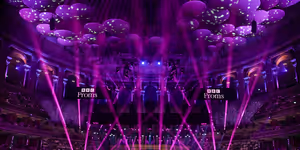
Review: THE PLANETS AND STAR WARS, Royal Albert Hall
The National Youth Orchestra treated the Proms to an intergalactic evening, including Caroline Shaw’s The Observatory
The National Youth Orchestra treated the Proms to an intergalactic evening, including Caroline Shaw’s The Observatory
New York City

Interview: Rachel Potter Celebrates New Album STAGES at The Laurie Beechman
The 8/11 concert will feature most of the guest singers on the album including Ali Stroker (Oklahoma!), Christine Dwyer (Wicked), and more
The 8/11 concert will feature most of the guest singers on the album including Ali Stroker (Oklahoma!), Christine Dwyer (Wicked), and more
United States
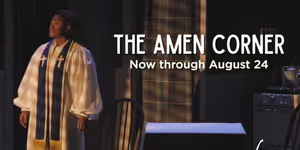
Video: First Look at THE AMEN CORNER Arkansas Repertory Theatre
James Baldwin’s rarely produced play runs August 5–17 as part of the 2025 SummerStage season.
James Baldwin’s rarely produced play runs August 5–17 as part of the 2025 SummerStage season.
International
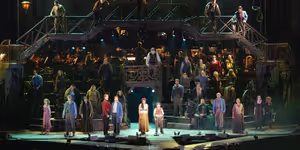
LES MISÉRABLES: WORLD TOUR SPECTACULAR Extends Due to Overwhelming Demand
Tickets for the new dates are on sale now via TicketWorld.
Tickets for the new dates are on sale now via TicketWorld.





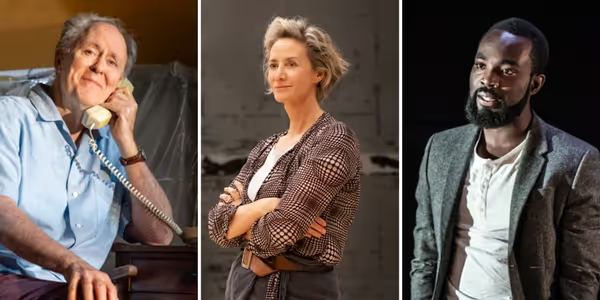


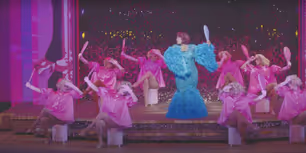

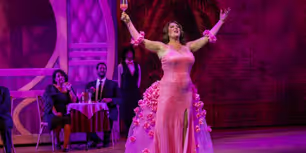
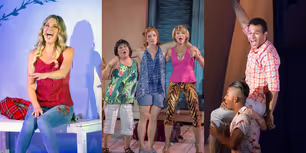
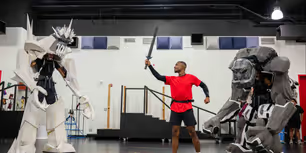
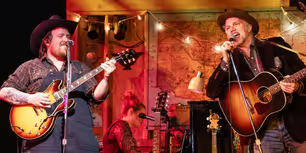

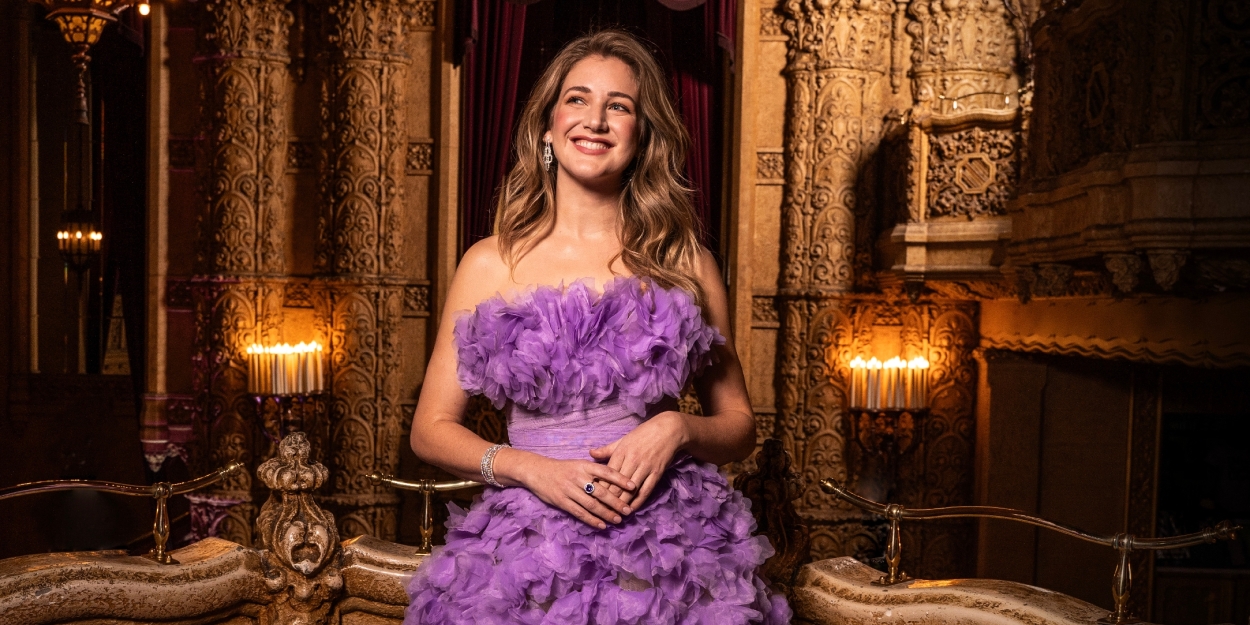
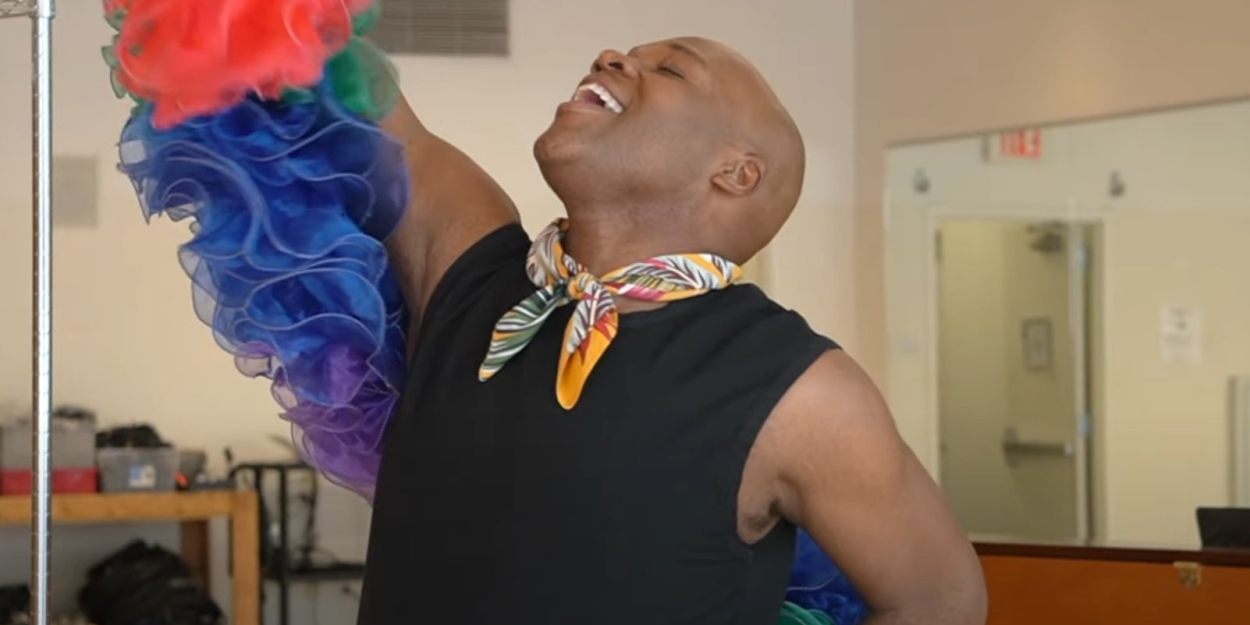

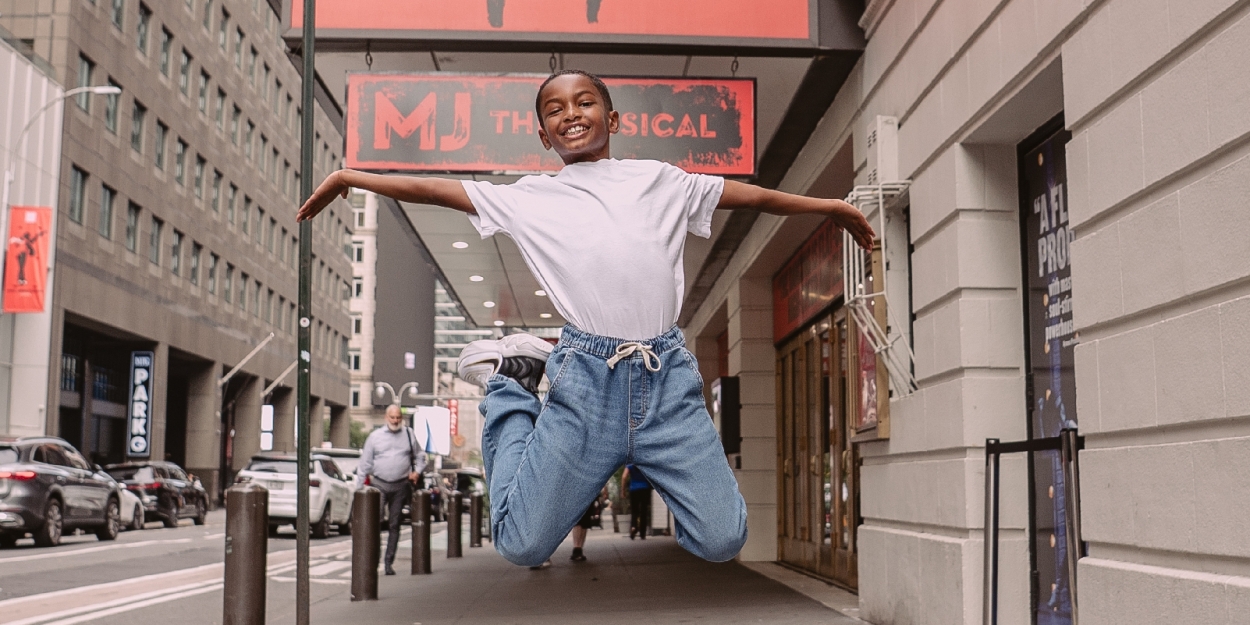




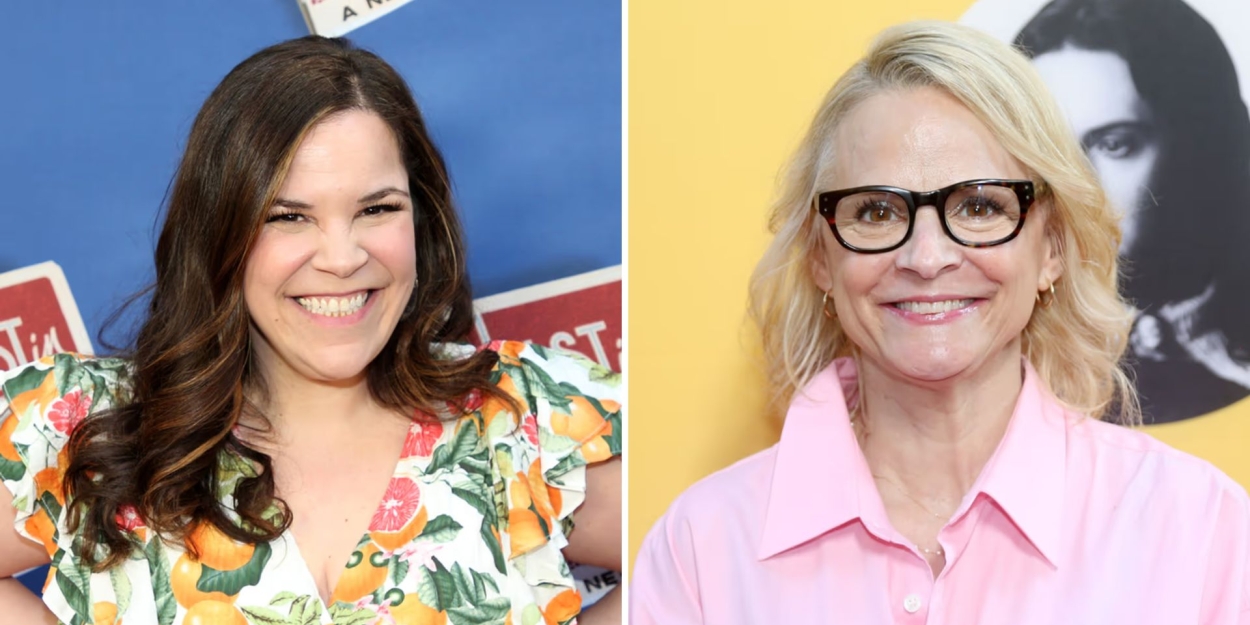

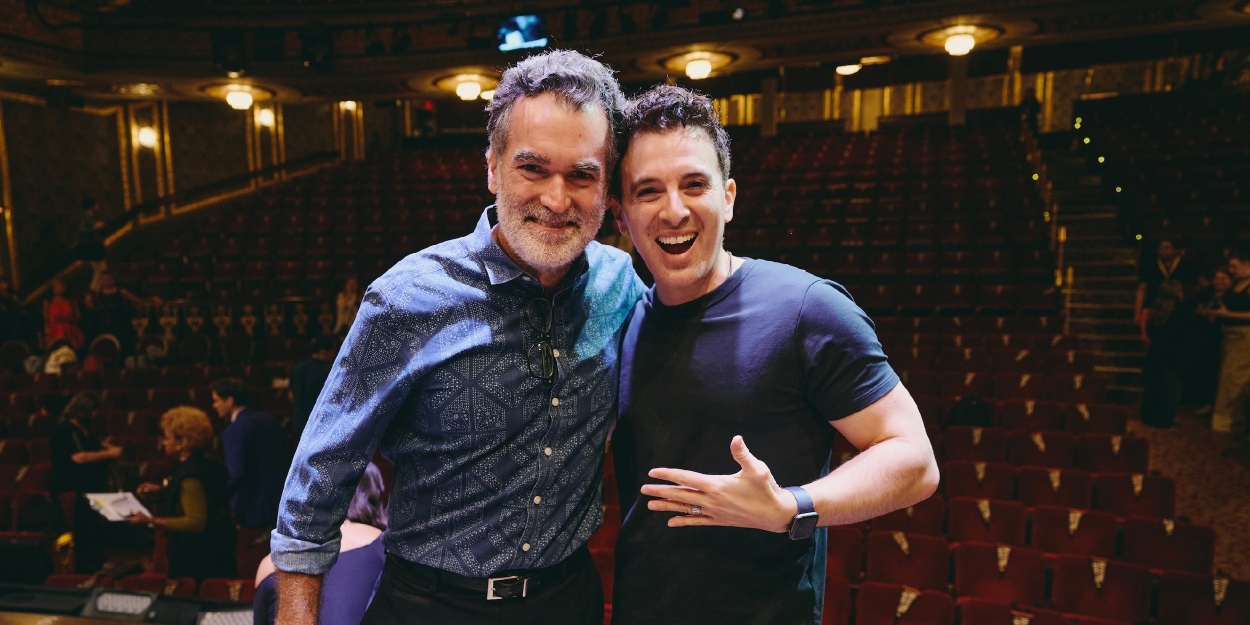
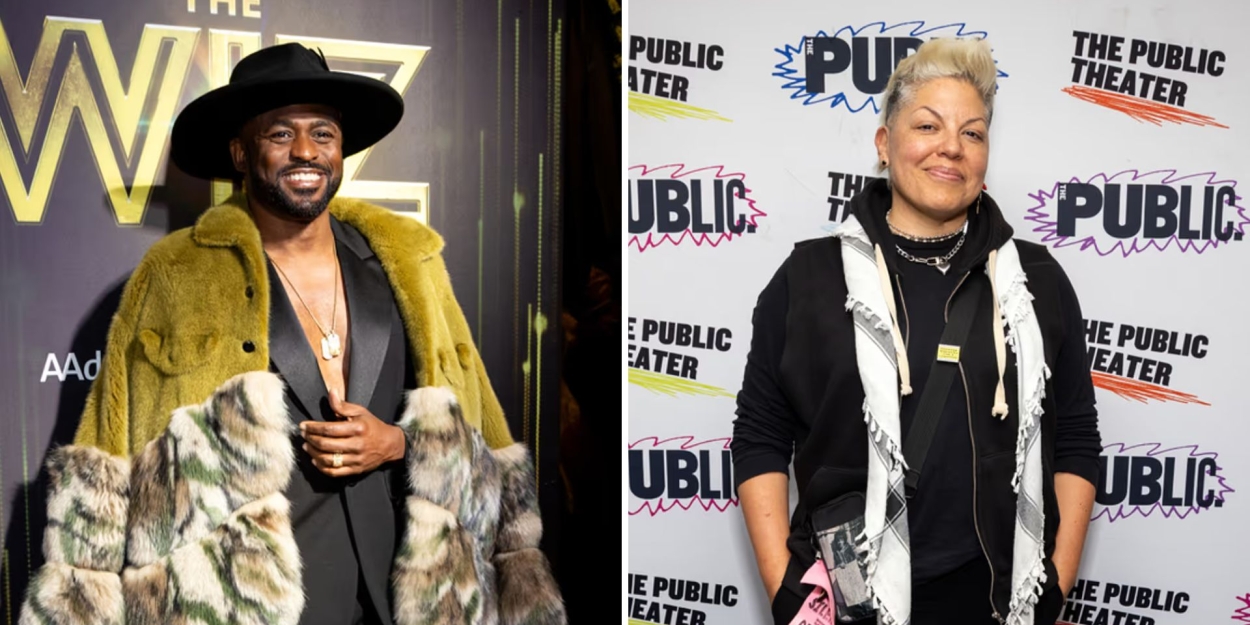
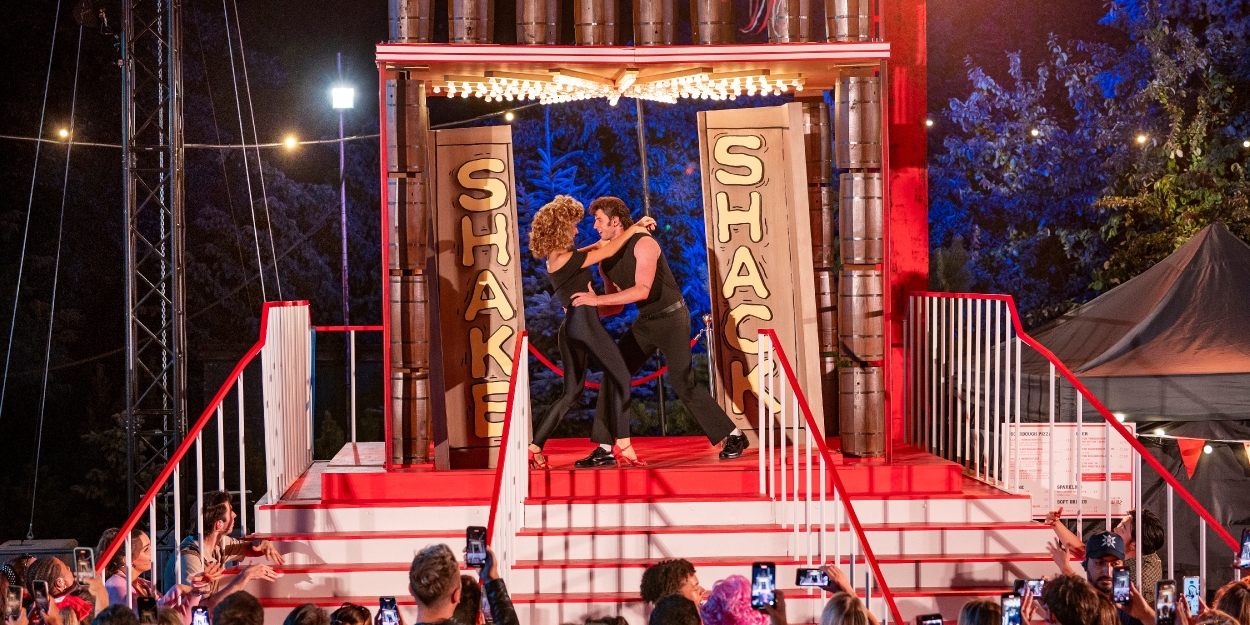
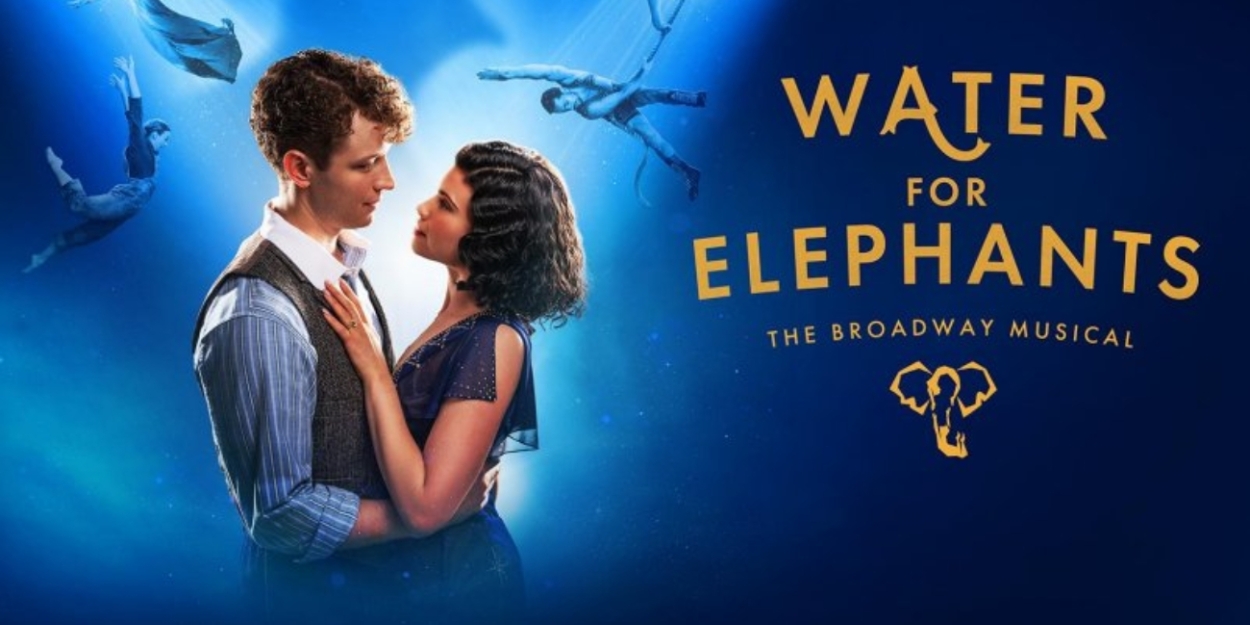
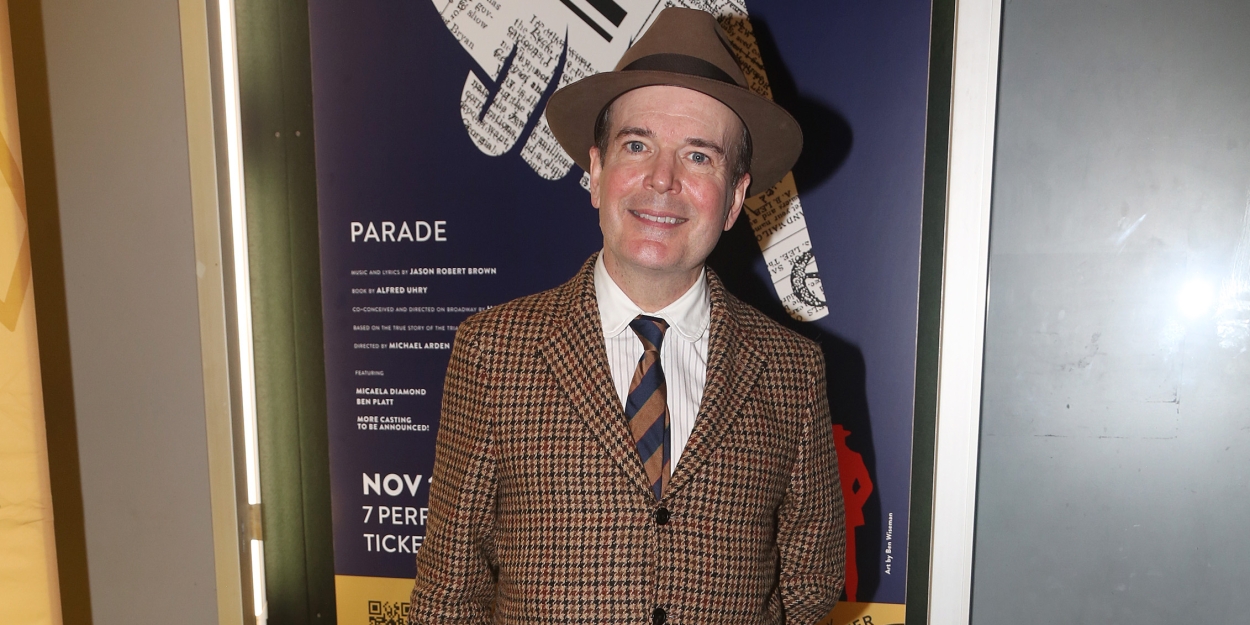
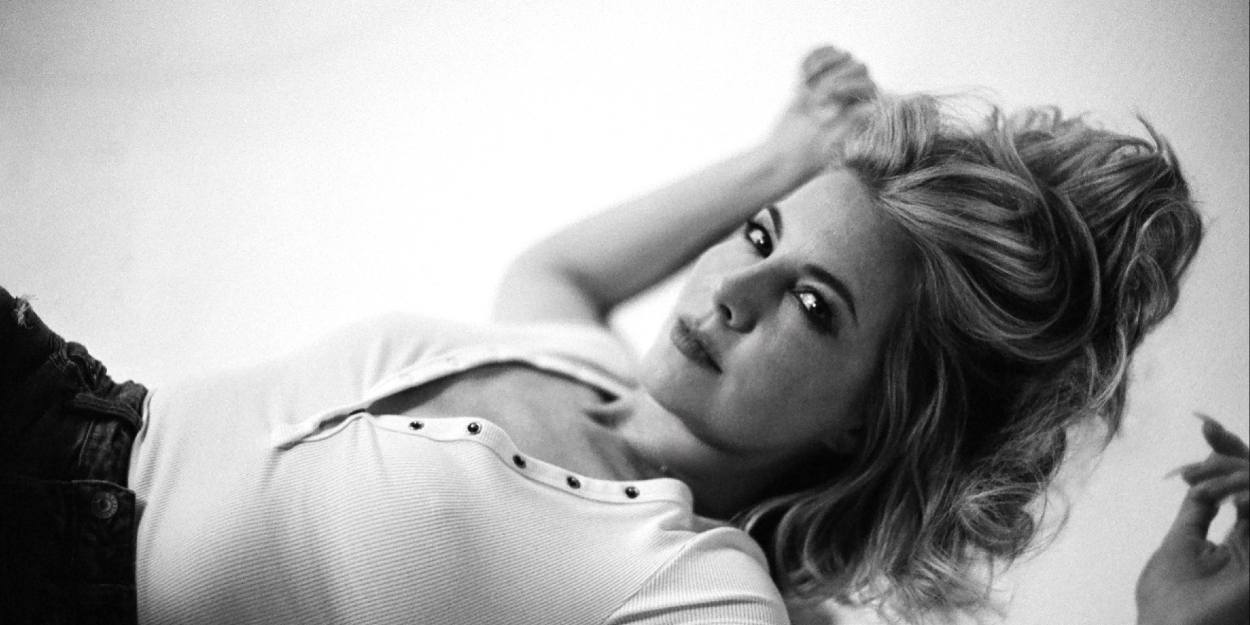
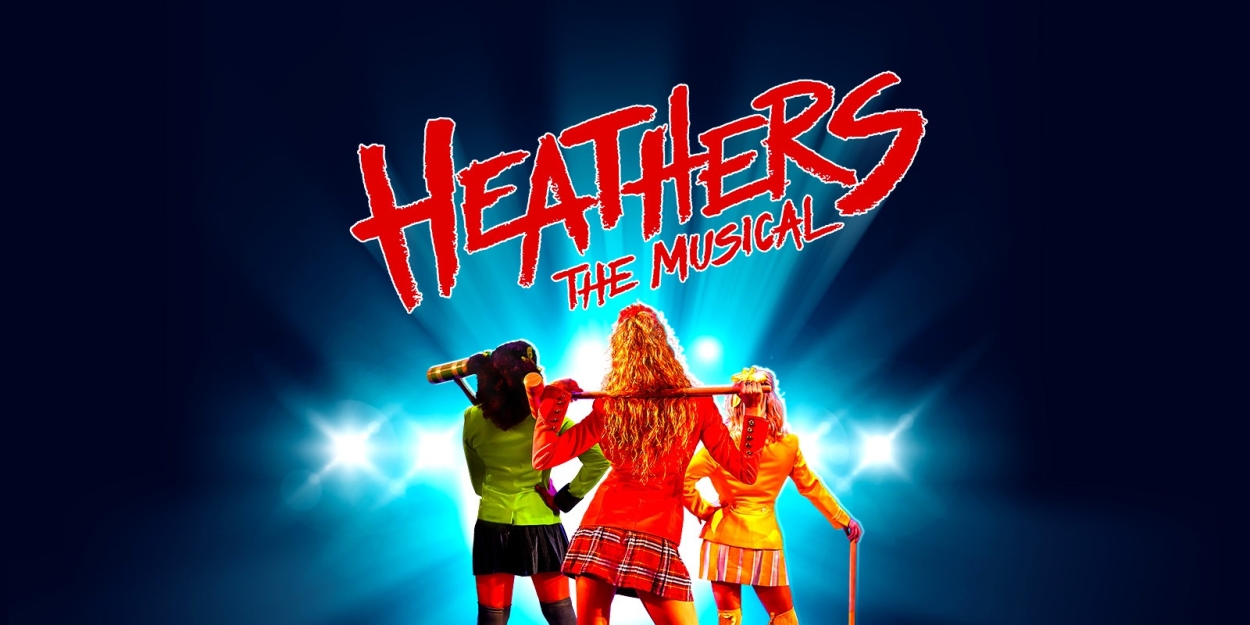
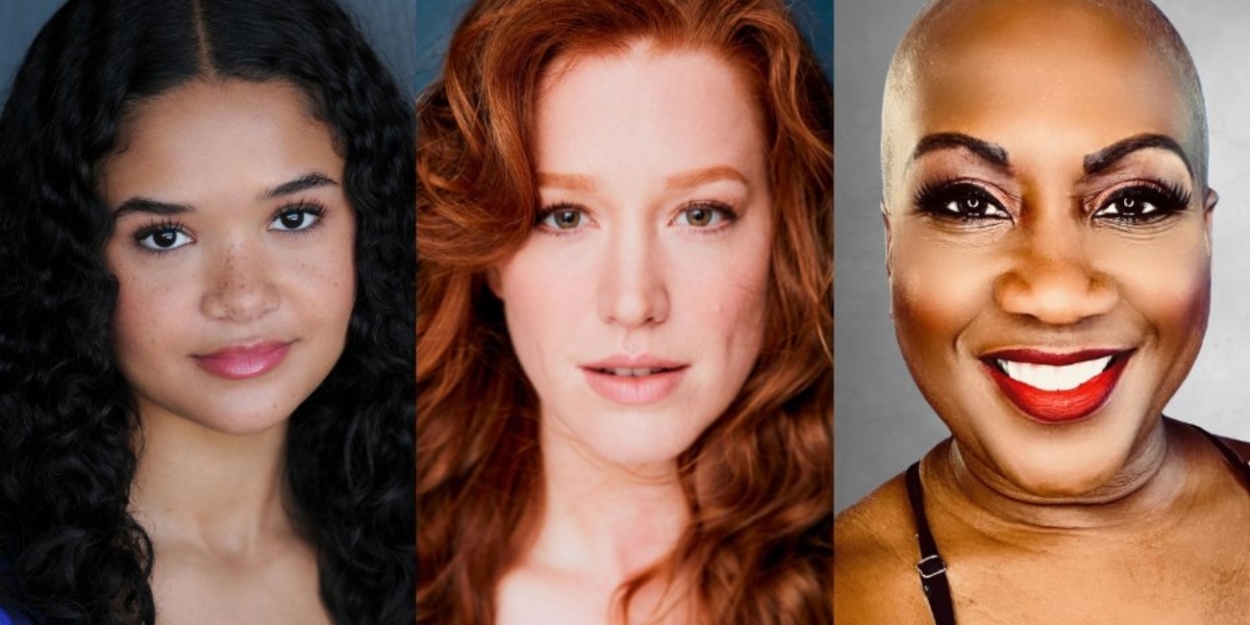
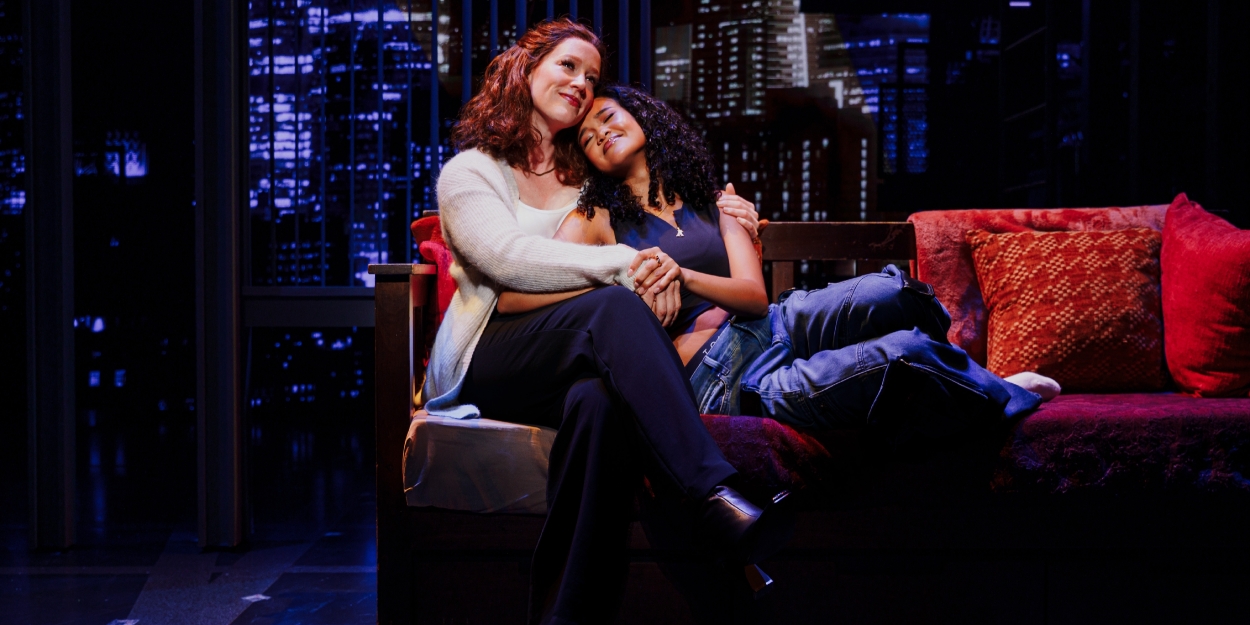

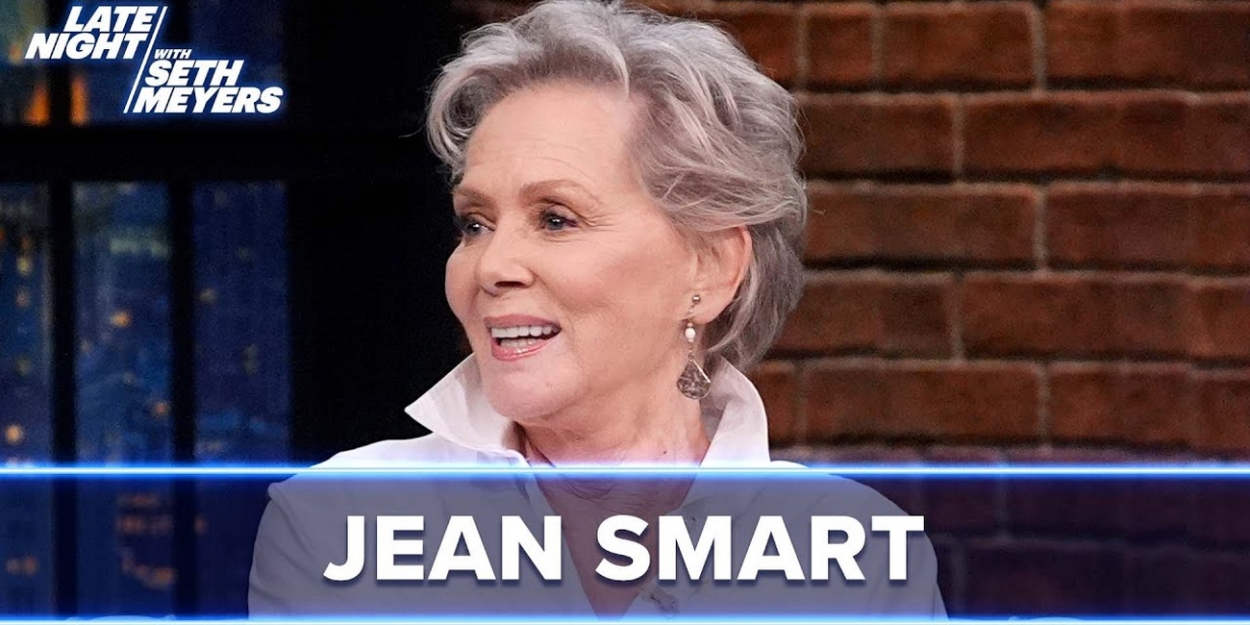

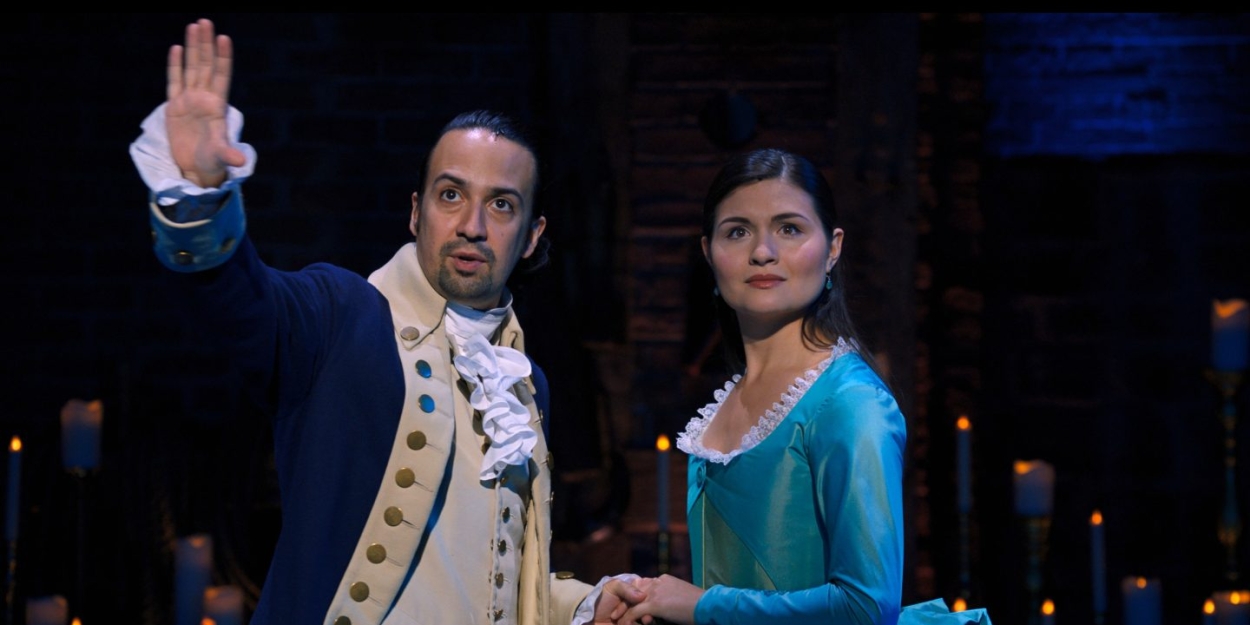

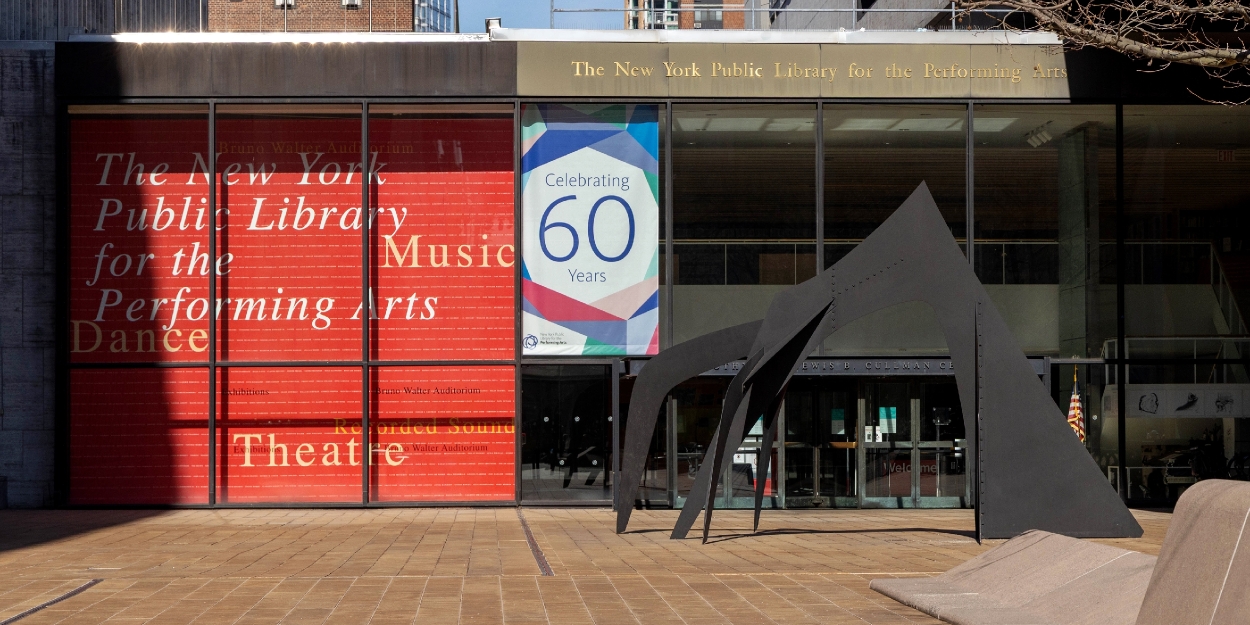

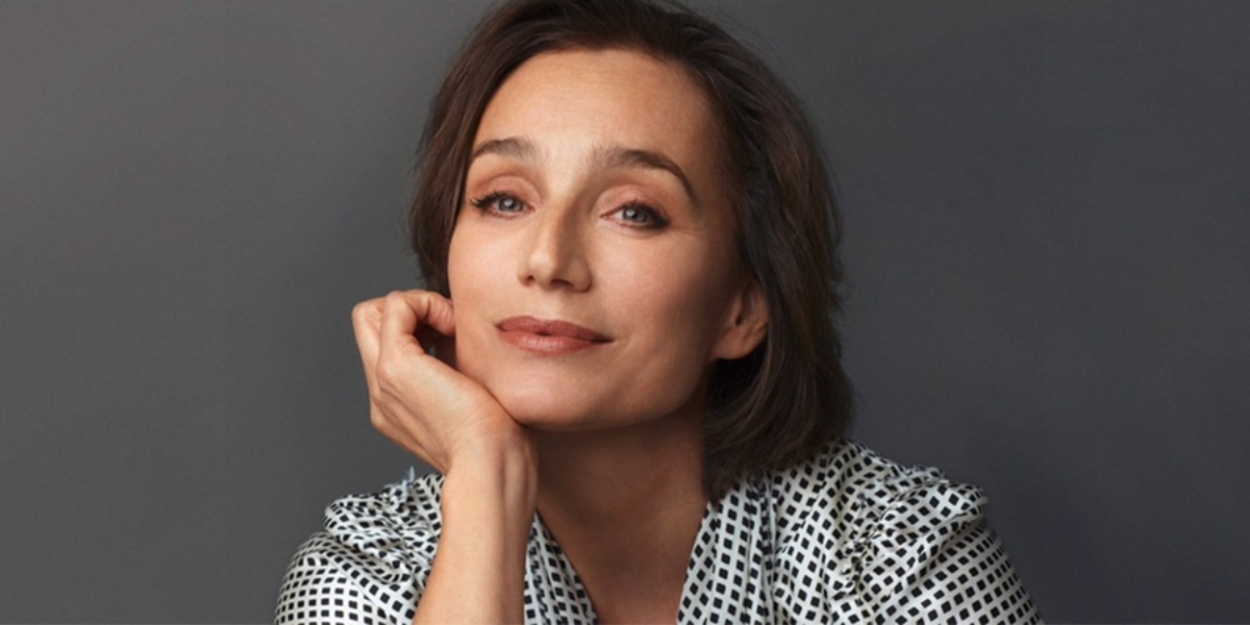


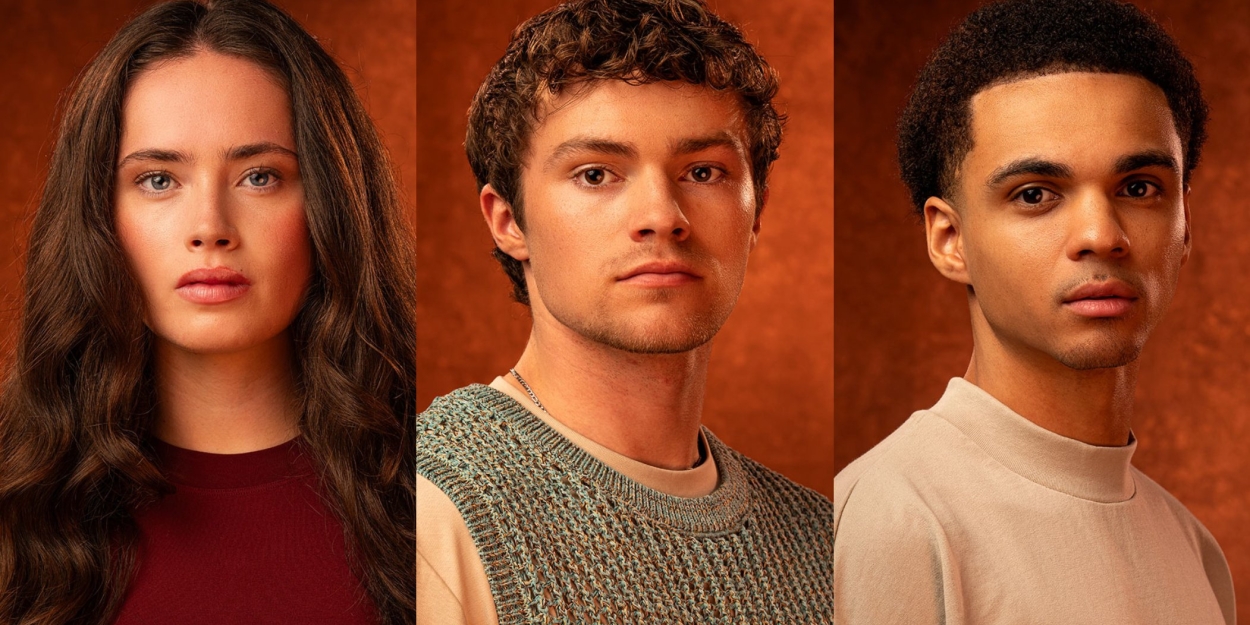
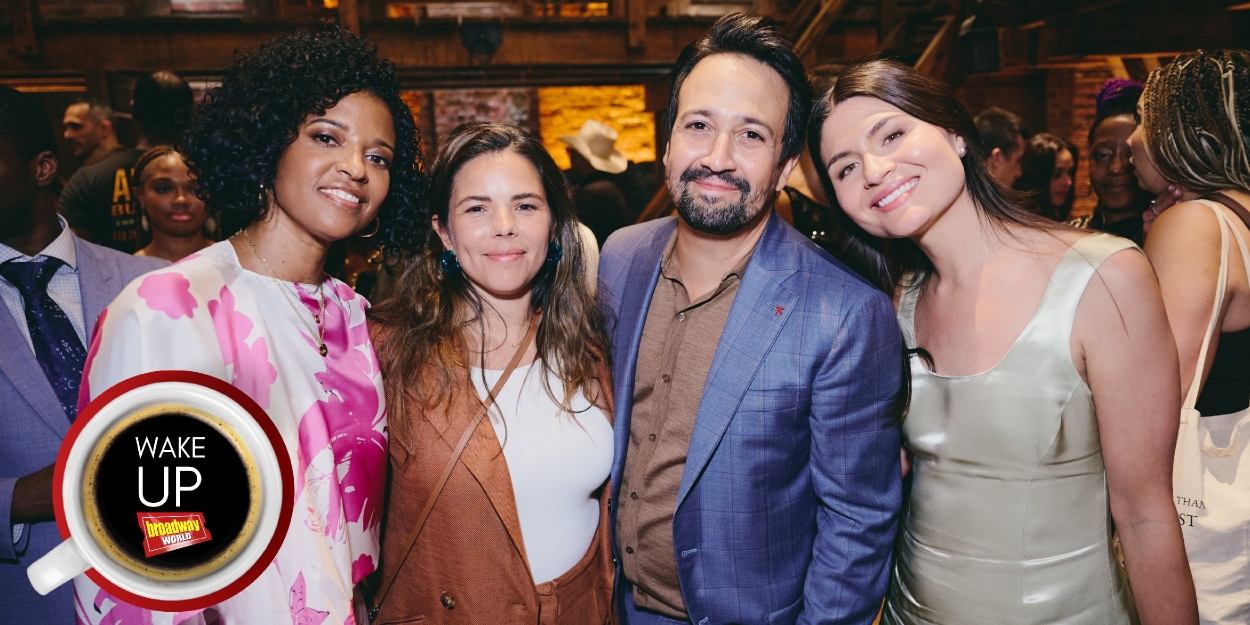
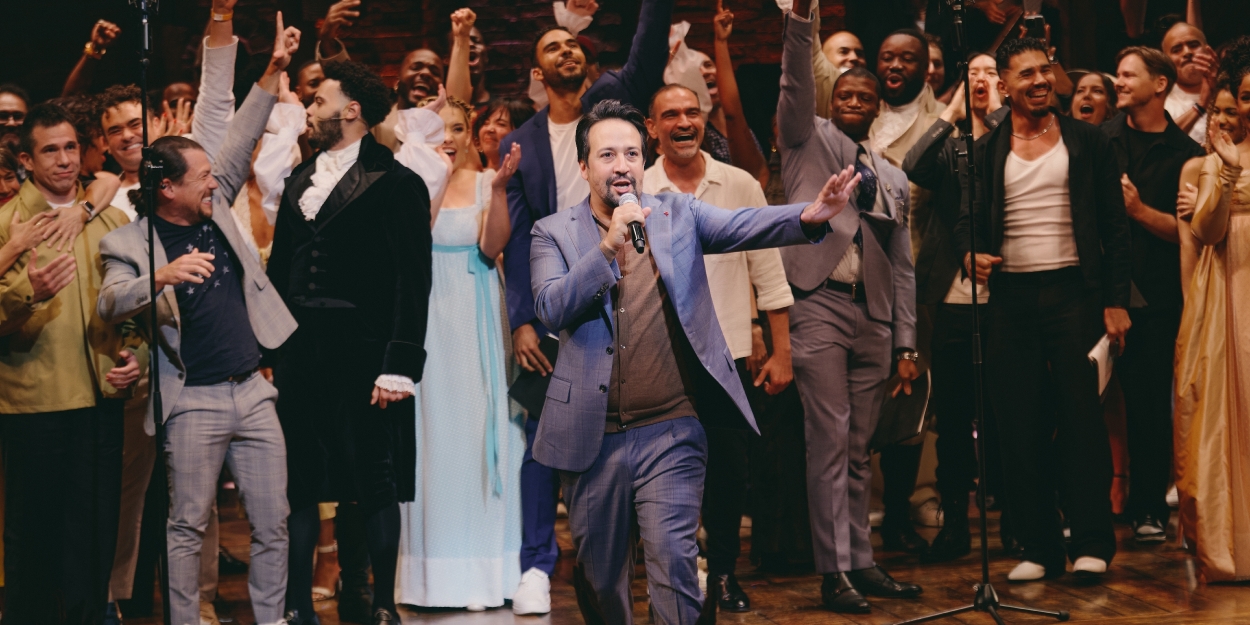
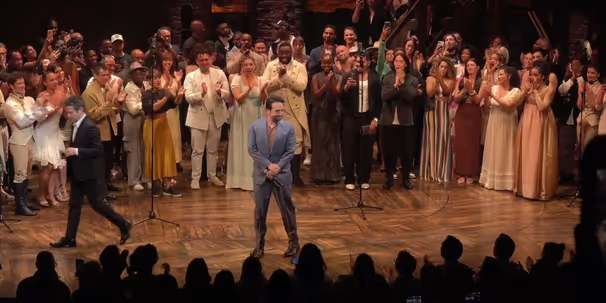
.jpg?format=auto&width=606)
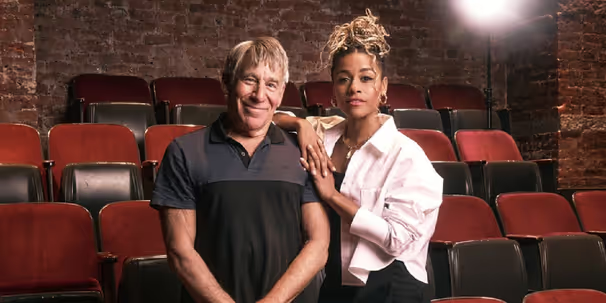

.jpg?format=auto&width=300)
















